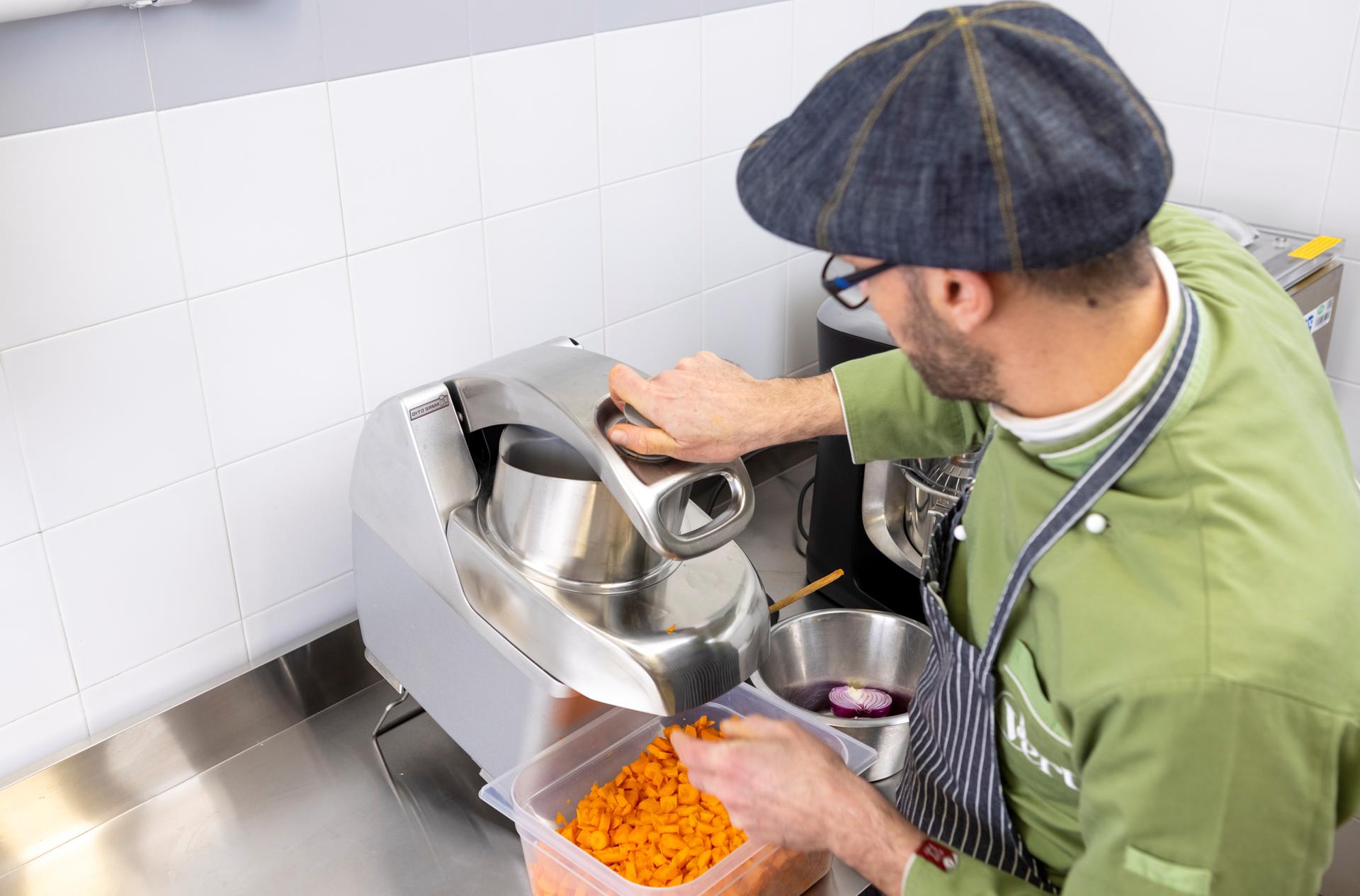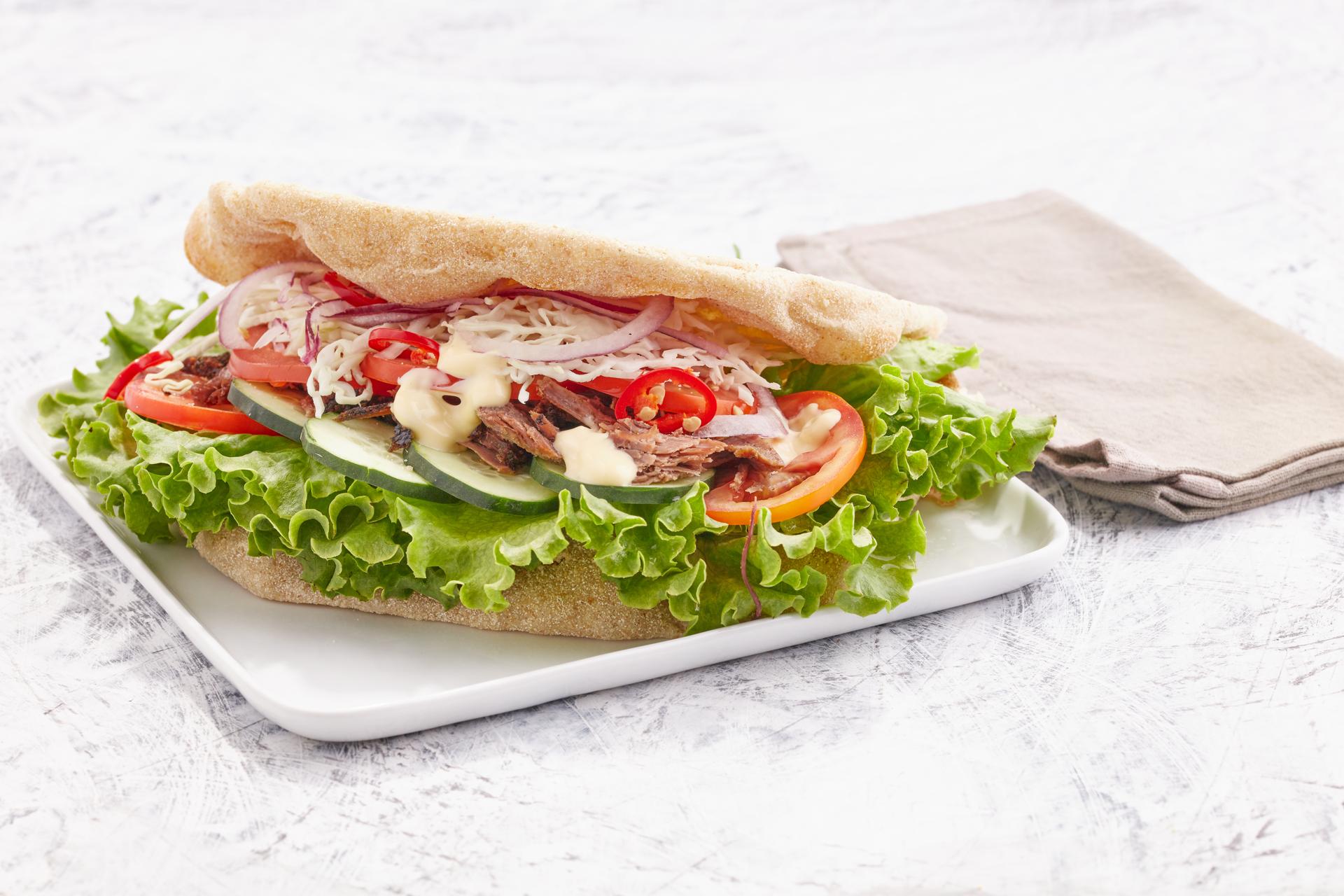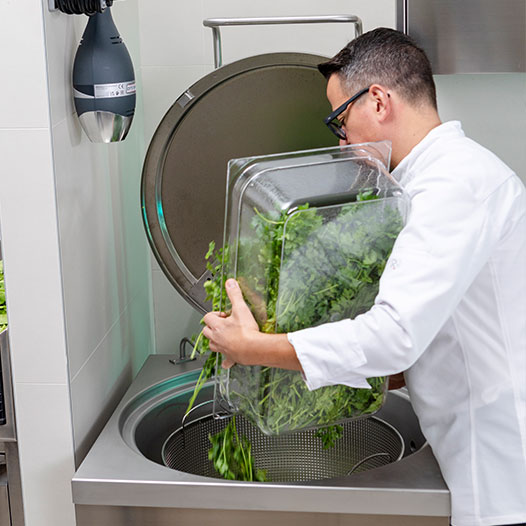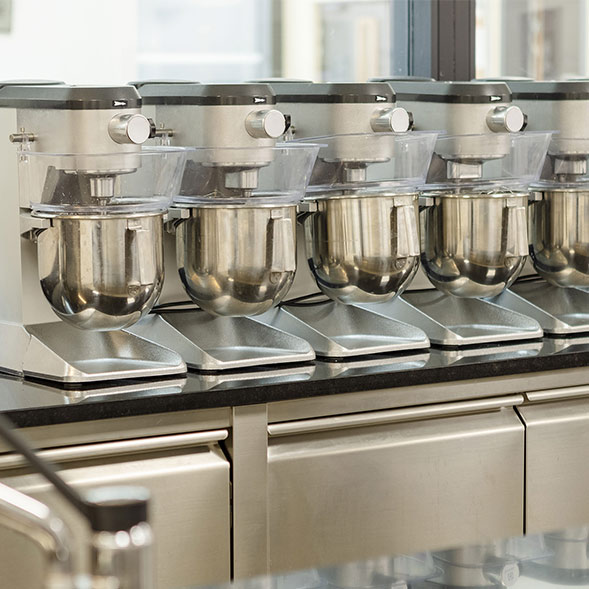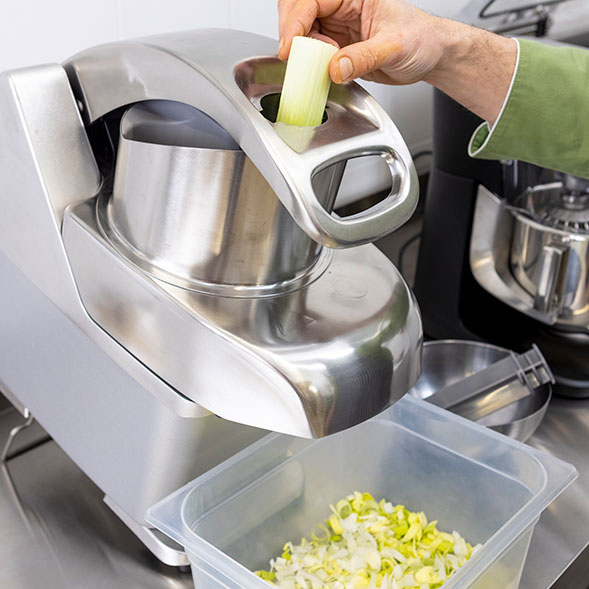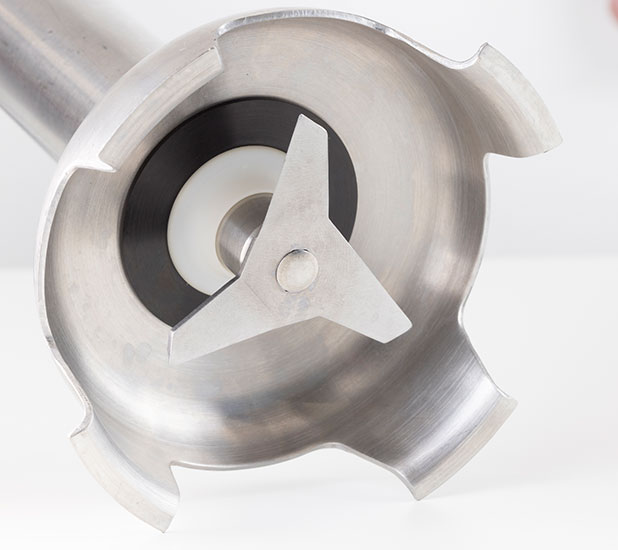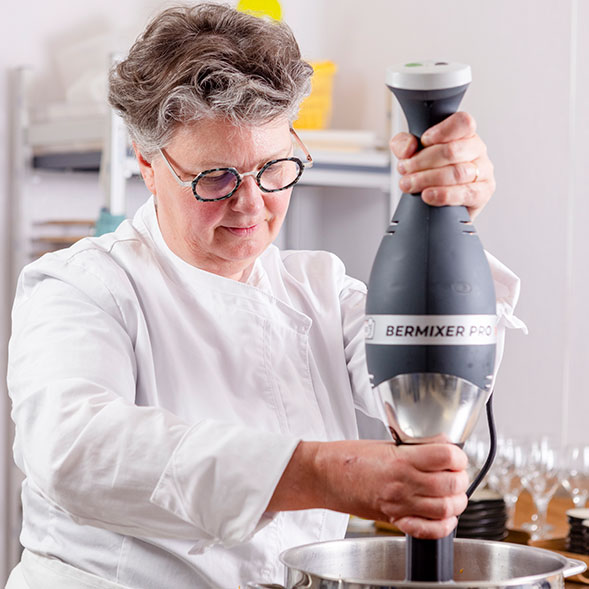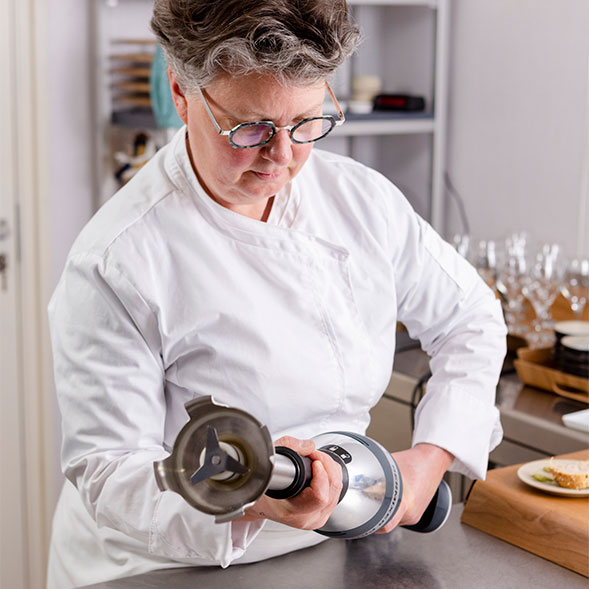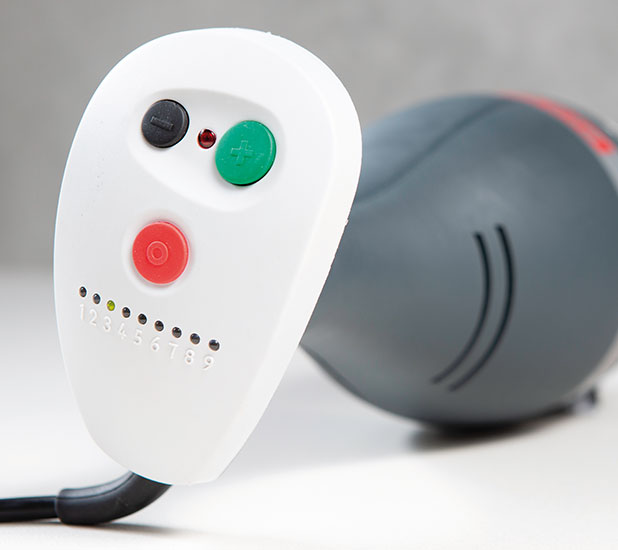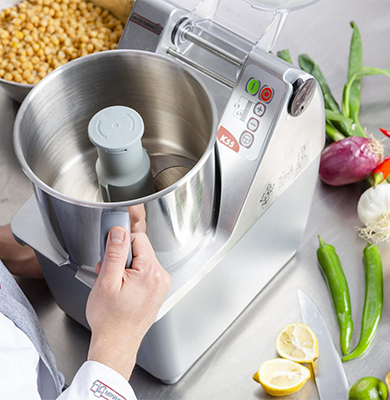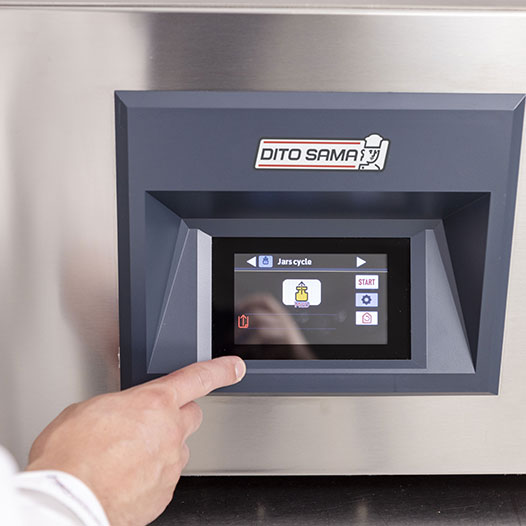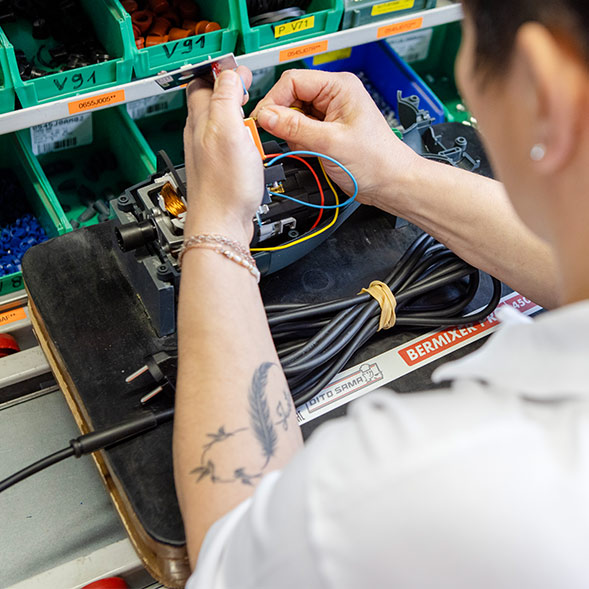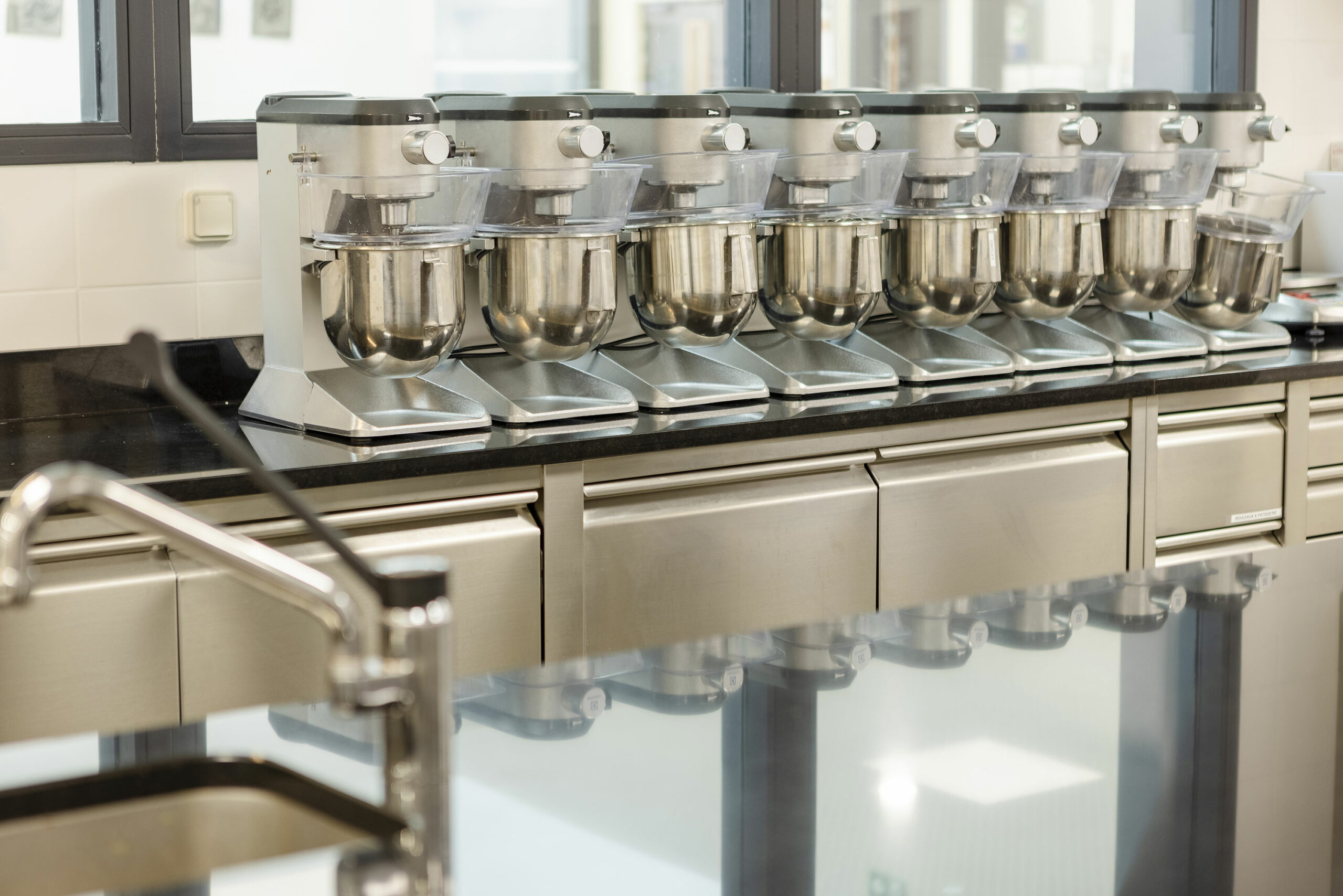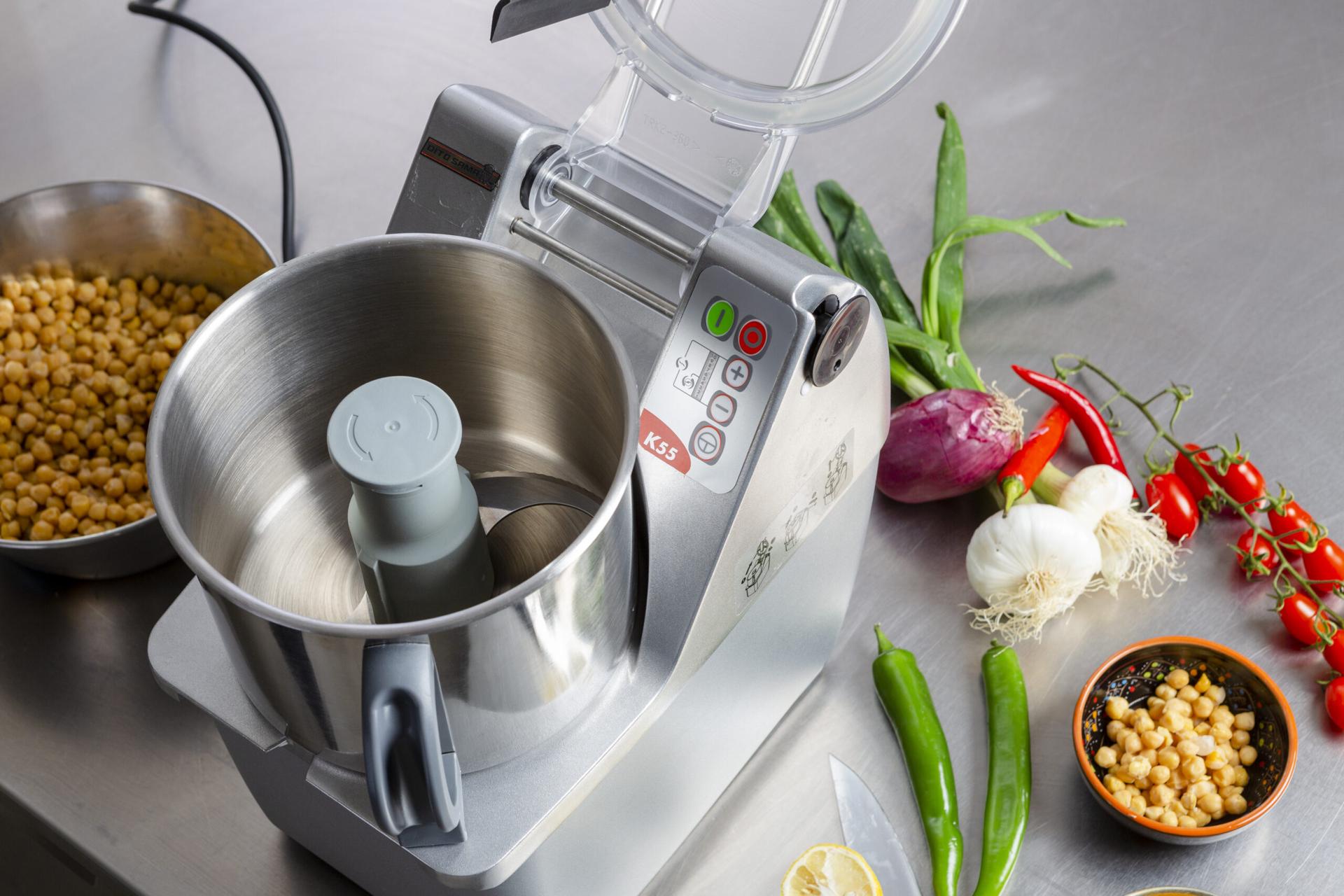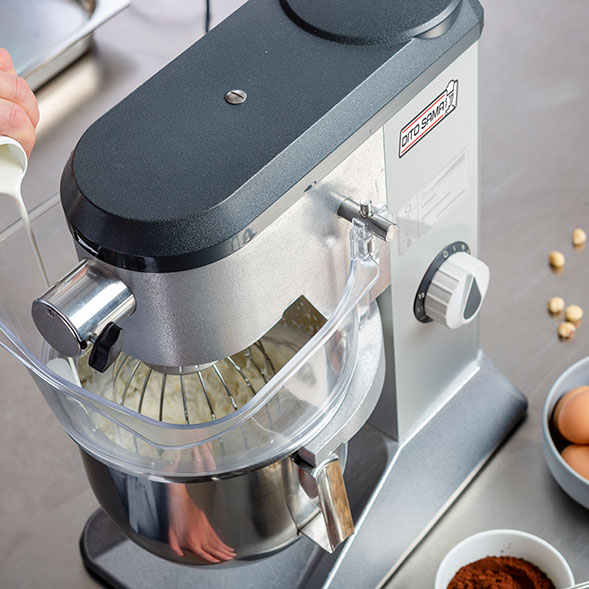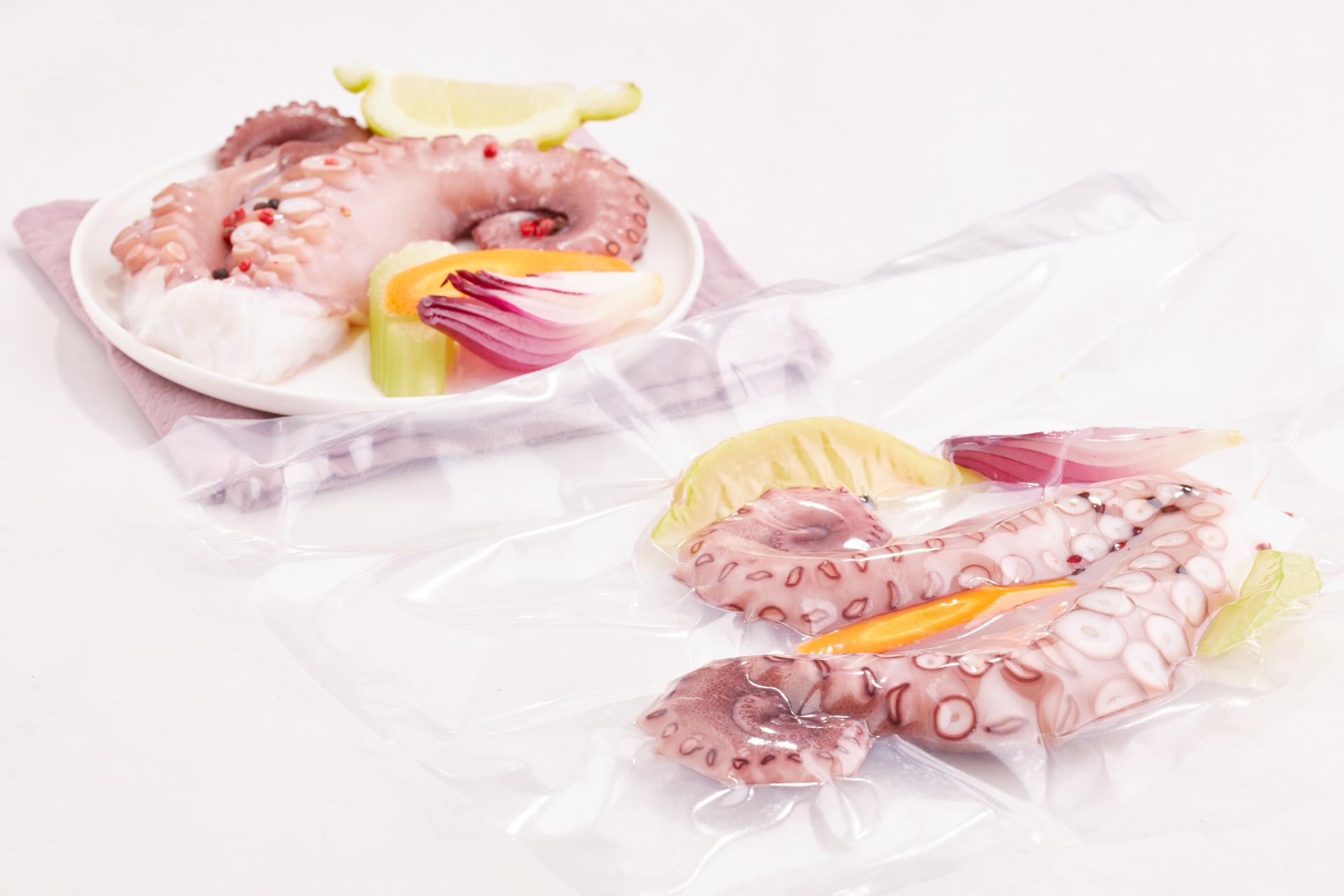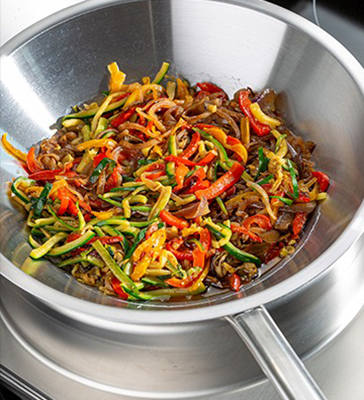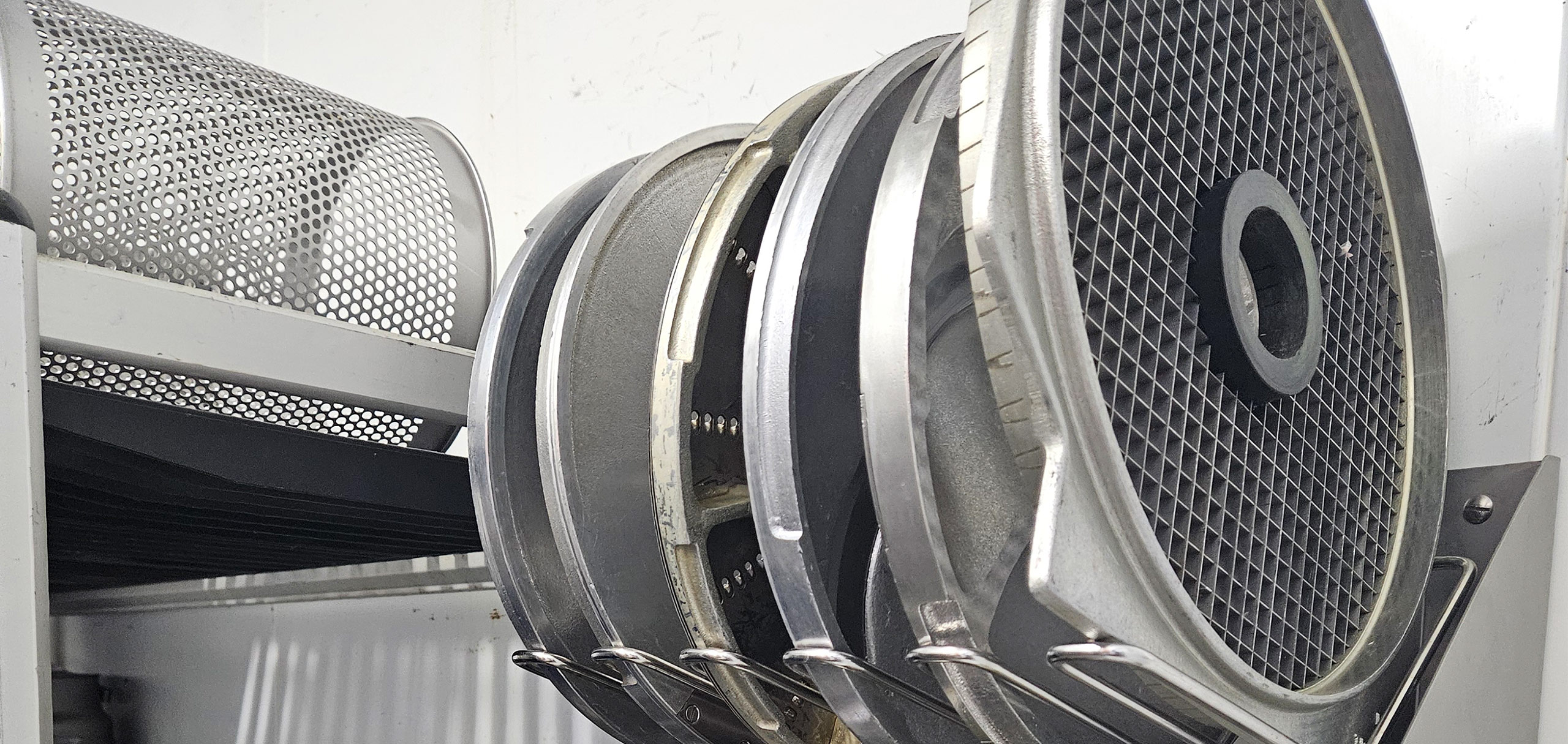

Mastering the Food Slicer: Best Practices for Consistent Cuts
A commercial food slicer can transform how your kitchen handles prep – saving time, reducing waste, and elevating consistency. But only if it’s used correctly. From perfecting cut thickness to preventing accidents and maintaining blade sharpness, there’s a lot more to using a food slicer than flipping the switch.
Whether you’re new to commercial slicers or want to refine your team’s technique, this guide covers everything you need to know about using and maintaining your food slicer for reliable, high-quality results.
How to Use a Commercial Food Slicer for Precision Cutting
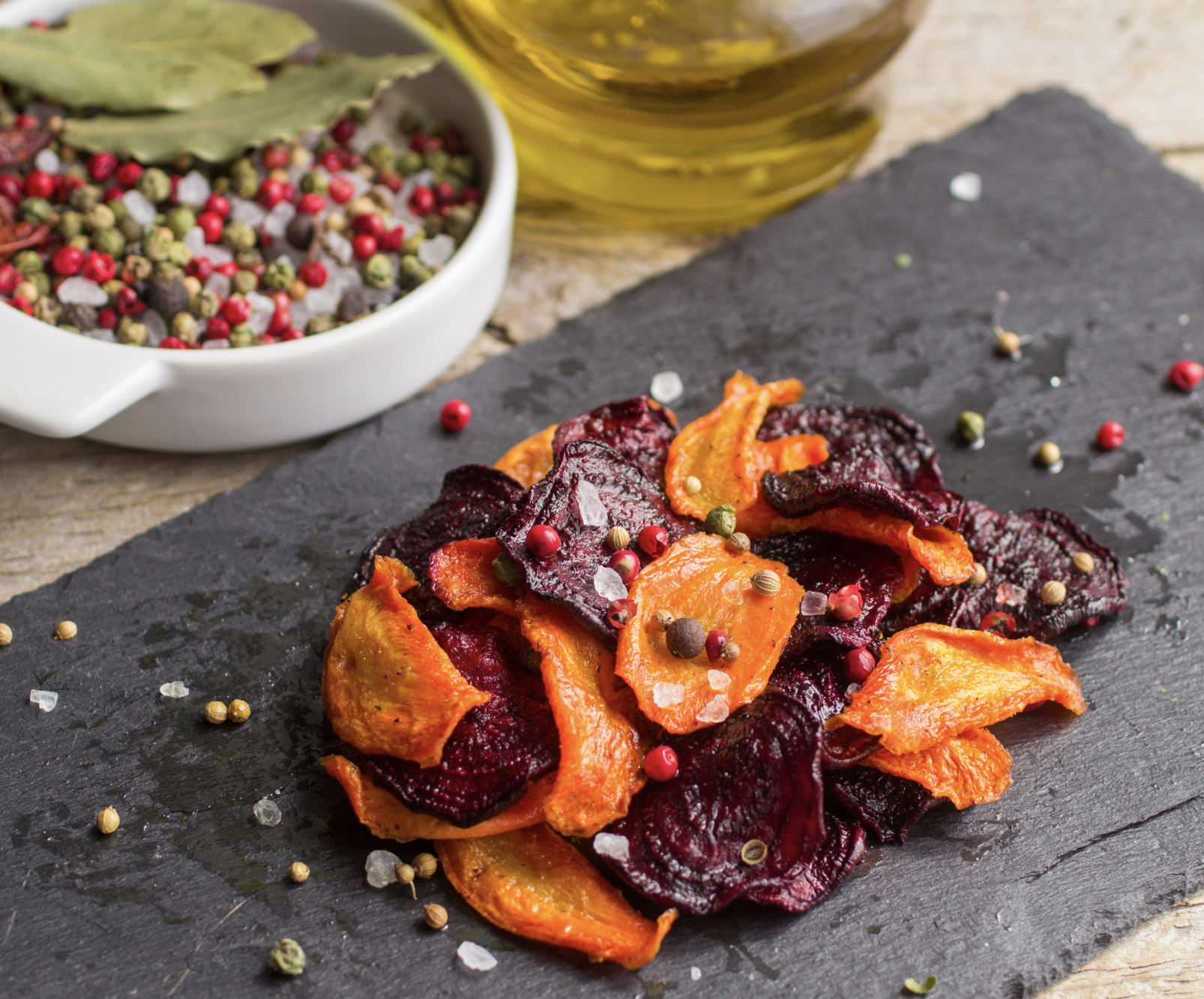
Commercial food slicers are designed to deliver precise, repeatable slices – ideal for everything from cured meats to firm vegetables. But to unlock their full potential, it’s important to treat the slicer as a precision instrument, not just another machine on the line.
Before you begin, always start with a stable, sanitized workspace. Assemble the slicer carefully, ensuring that the blade and guard are properly fitted. Many high-quality vegetable slicers and cutters, including Dito Sama models, are equipped with safety interlock systems that prevent the machine from operating unless all components are securely in place.
Next, adjust the thickness dial thoughtfully – consider the ingredient, the intended texture, and the visual appeal of the final dish. For example, paper-thin slices are perfect for carpaccio or garnishes, while thicker cuts may be preferred for roasting or layering in sandwiches.
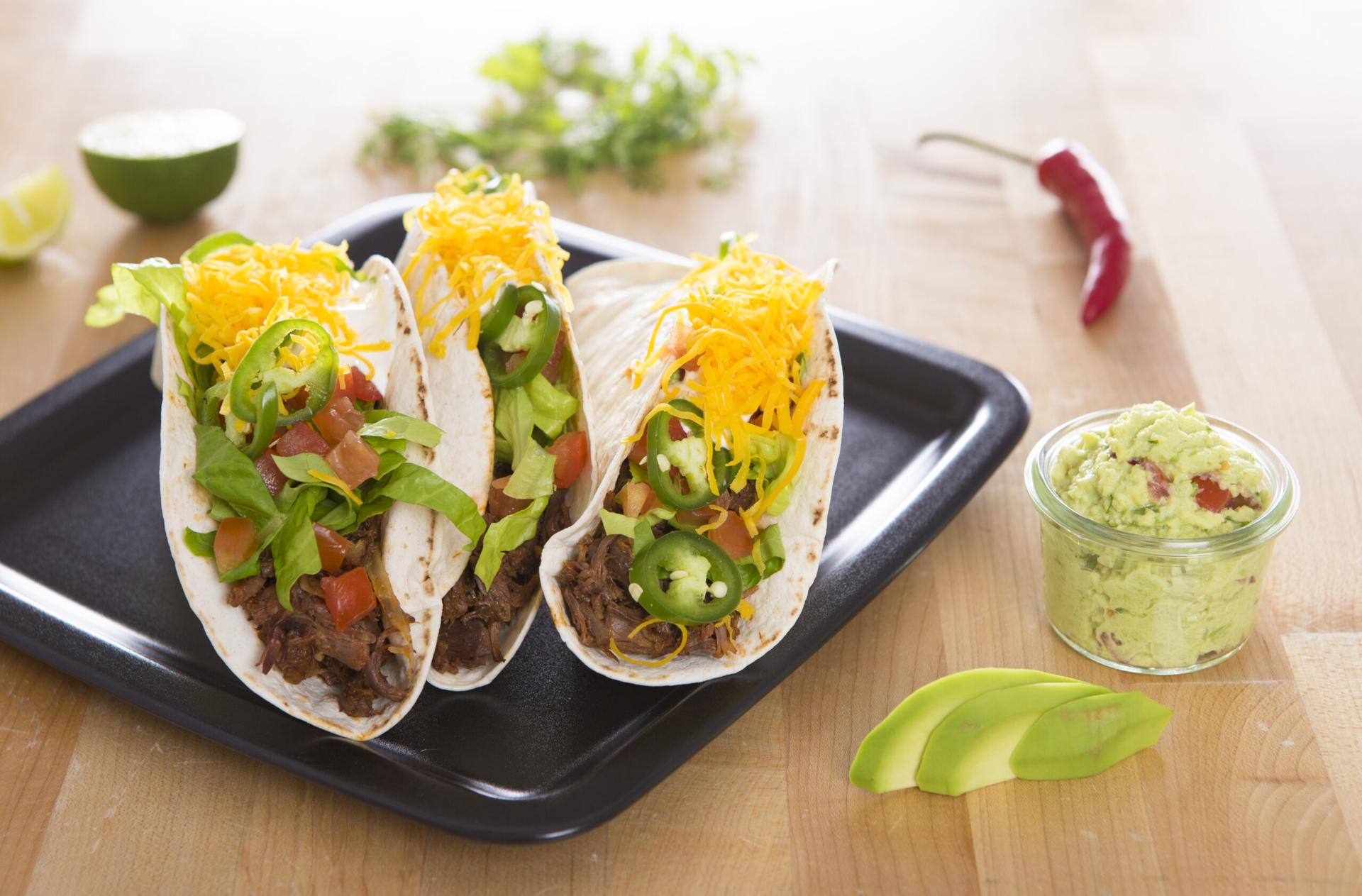
When feeding food through the slicer, always use the food pusher and apply steady, consistent pressure. Jerky or uneven motions can result in ragged cuts and increase the risk of injury. Let the blade do the work – high-quality slicers are designed to glide through product with minimal effort.
Working in organized batches can also streamline your prep. Group ingredients by slicing thickness or recipe use, so you’re not constantly resetting the machine or switching out discs. This saves time and minimizes handling, which improves hygiene and reduces the chance of cross-contamination.
Don’t forget to keep your workspace organized: have trays ready to collect sliced product, and clean as you go. A cluttered slicing station can slow you down and create unnecessary risks.
With proper technique, a food slicer can transform prep from a time-consuming chore into a clean, efficient process that enhances every dish on the menu.
Common Mistakes to Avoid When Operating a Food Slicer
Even experienced kitchen staff can develop habits that reduce the effectiveness of commercial slicers – or worse, put safety at risk. Here are a few pitfalls to avoid:
- Skipping setup checks: loose blades or misaligned parts can affect performance and safety.
- Applying uneven pressure: forcing the food through the slicer increases wear on the motor and creates irregular cuts.
- Using dull blades: a dull blade not only reduces slicing quality but also makes the machine work harder, shortening its lifespan.
- Neglecting cleaning: slicer blades and food trays should be cleaned thoroughly after each use to prevent contamination and buildup.
- Cutting unsuitable items: not all foods belong in a slicer. Avoid slicing very soft, crumbly, or frozen items unless the machine is rated for it.
Training your staff to recognize and avoid these issues will help extend your slicer’s lifespan and keep operations smooth.
Cleaning and Maintenance Tips for Long-Lasting Performance
A well-maintained slicer performs better, lasts longer, and keeps your kitchen compliant with health codes. Here’s how to keep it in peak condition:
01.
Disassemble and clean daily:
wipe down all surfaces, remove food particles from hard-to-reach areas, and sanitize according to your kitchen’s standards.
02.
Sharpen the blade regularly:
most slicers come with a built-in sharpening tool. Follow the manufacturer’s guidelines for frequency and technique.
03.
Inspect seals and moving parts:
look for signs of wear or damage and replace parts proactively to avoid downtime.
04.
Lubricate according to the manual:
if required, apply food-safe lubricant to moving parts as directed.
05.
Store safely:
when not in use, unplug and cover the slicer to protect it from dust and debris.
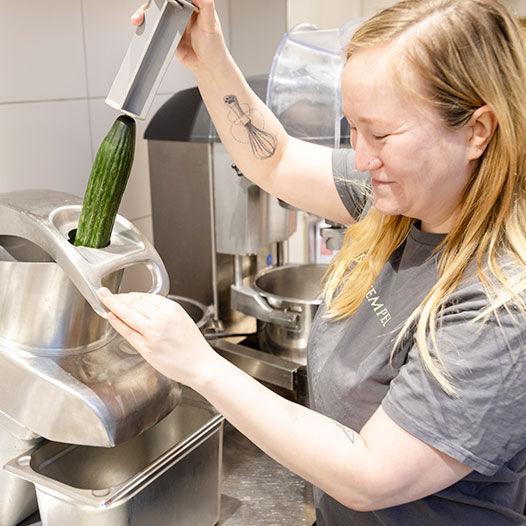
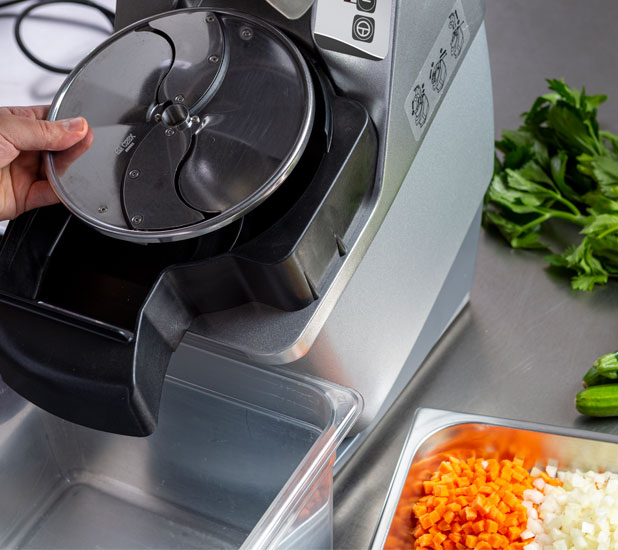
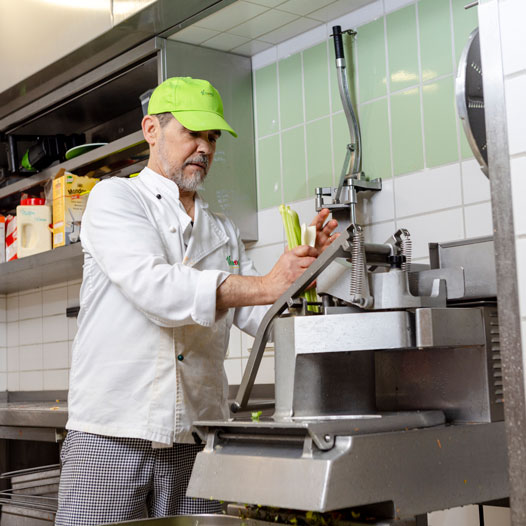

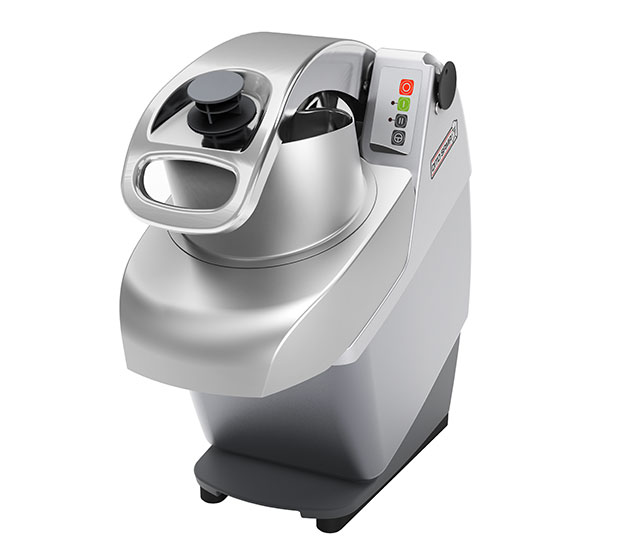

01.
Disassemble and clean daily:
wipe down all surfaces, remove food particles from hard-to-reach areas, and sanitize according to your kitchen’s standards.

02.
Sharpen the blade regularly:
most slicers come with a built-in sharpening tool. Follow the manufacturer’s guidelines for frequency and technique.

03.
Inspect seals and moving parts:
look for signs of wear or damage and replace parts proactively to avoid downtime.

04.
Lubricate according to the manual:
if required, apply food-safe lubricant to moving parts as directed.

05.
Store safely:
when not in use, unplug and cover the slicer to protect it from dust and debris.
Many Dito Sama models are designed for easy disassembly and hygiene, helping streamline cleaning without sacrificing durability or performance.
With the right habits and tools, a commercial food slicer becomes more than just a prep tool – it becomes an essential part of a faster, safer, and more consistent kitchen operation.
LAST NEWS

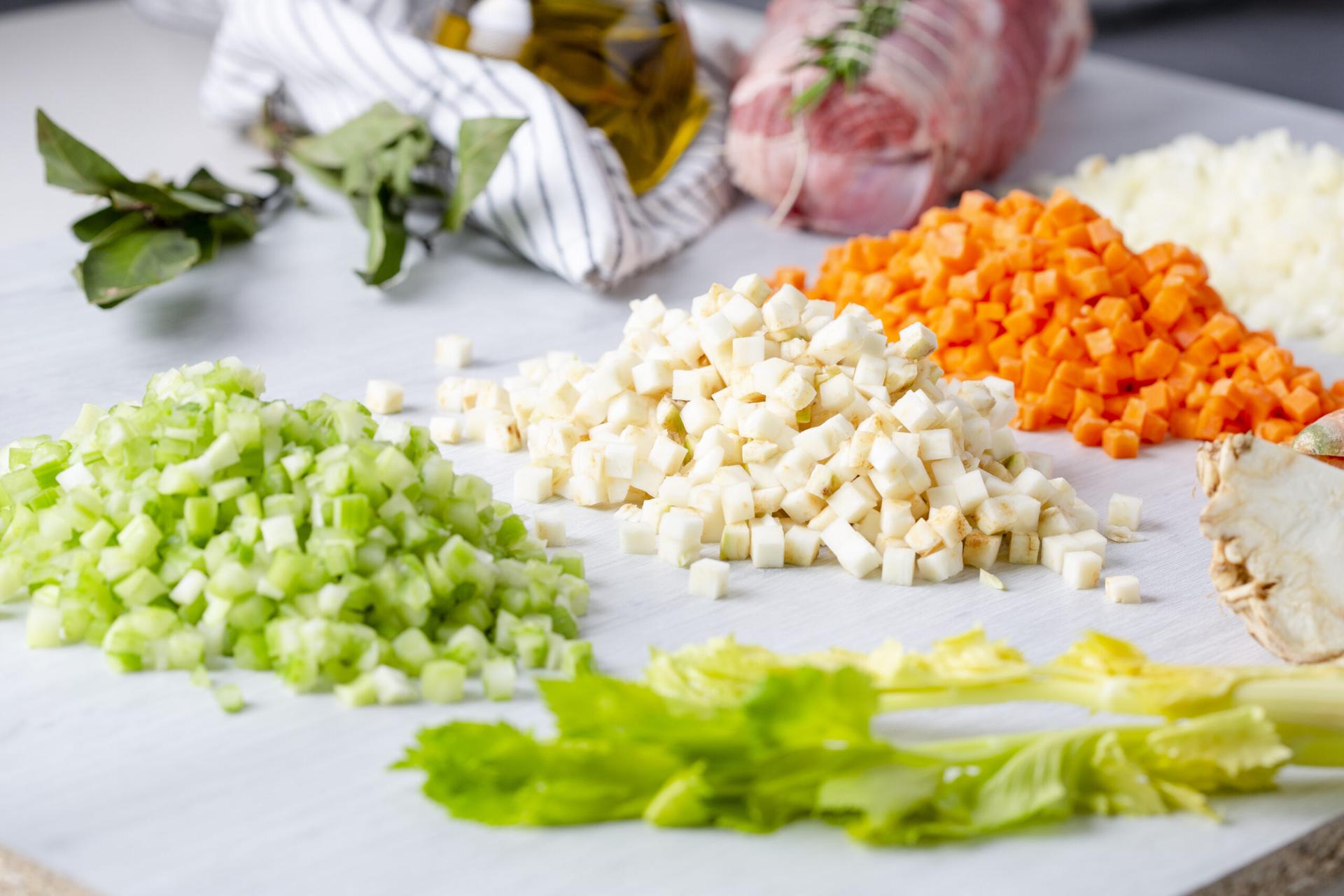

Best Techniques for Efficient and Precise Vegetable Preparation

Vegetable prep is one of the most time-consuming tasks in any commercial kitchen – and one of the most important. Whether it’s for a delicate garnish or a high-volume batch of sliced potatoes, the way vegetables are prepared affects texture, taste, and timing. In busy professional kitchens, mastering this part of the workflow can make the difference between a smooth service and a rushed one.
Let’s explore why precision matters, what tools make the biggest difference, and how to structure your prep process for maximum efficiency.
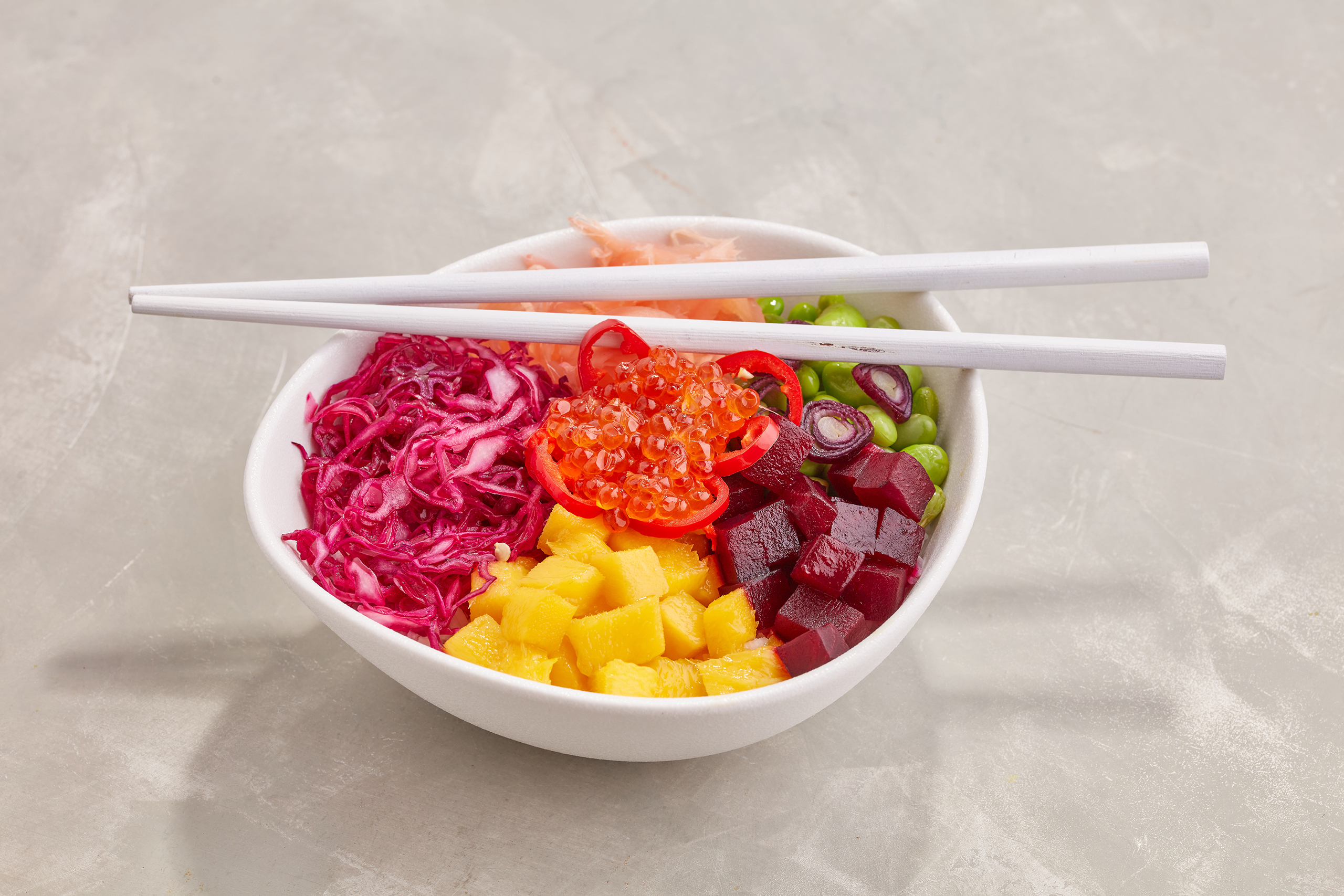
The Importance of Precision in Commercial Vegetable Preparation
Vegetable preparation isn’t just about cutting things up quickly – it’s about consistency. Even, well-sized cuts ensure that vegetables cook at the same rate, absorb flavors uniformly, and contribute to the visual appeal of the dish. This kind of precision supports both food quality and kitchen efficiency.
In commercial settings, inconsistent prep can lead to longer cook times, uneven textures, and avoidable waste. More importantly, it disrupts the rhythm of a professional kitchen where timing is everything. Precise vegetable prep improves plating, simplifies portioning, and helps maintain food costs.
Essential Tools for Fast and Uniform Vegetable Cutting
While skilled knife work is always valuable, commercial kitchens depend on more than blades alone. The right equipment helps scale precision and speed across multiple shifts. Here are some essential tools:
- Commercial vegetable slicers: designed for volume and uniformity, these machines can process large quantities of vegetables with adjustable slicing settings to suit different needs.
- Food processors with slicing attachments: versatile and efficient, they allow for quick changeovers between tasks like chopping, grating, and shredding.
- Mandolines and handheld cutters: useful for small batches or precise cuts, especially in prep stations where space is limited.
When choosing these tools, look for models that are easy to clean, offer safety features, and come with multiple blade or disc options. Dito Sama’s professional vegetable slicers, for instance, are engineered for performance, ease of use, and hygiene – making them ideal for both fast-paced and precision-driven kitchens.
Best Practices for Maximizing Efficiency in High-Volume Kitchens
To truly speed up vegetable prep without sacrificing quality, it's not just about tools – it’s about process. A well-structured prep station paired with thoughtful time management can create an environment where speed and precision go hand in hand. Here are a few tried-and-true strategies:
Some kitchens also benefit from integrating vegetable prep into digital systems – using kitchen display systems or software to track quantities, prep times, and waste metrics. This adds a data-driven dimension to kitchen operations, allowing teams to make smarter adjustments over time.
Ultimately, efficient vegetable prep is about more than speed. It’s about designing a system that allows your team to work smarter, stay consistent, and deliver high-quality dishes with confidence and precision.
LAST NEWS



How to Select a Reliable Restaurant Equipment Supplier
The process of selecting a restaurant equipment supplier goes far beyond checking what’s in stock. It’s about building a partnership with someone who understands the daily realities of your kitchen – whether it’s the rush of lunch service or the pressure to deliver consistent results with limited space and time. The right supplier becomes part of your operation’s rhythm, offering more than just products: they bring knowledge, stability, and problem-solving when it matters most.
In this article, we’ll explore what to look for in a kitchen equipment supplier, how to evaluate product quality and pricing, and the key questions to ask before entering a long-term partnership.
Key Factors to Consider When Selecting a Restaurant Equipment Supplier
Not all suppliers are created equal. A good one will act as a partner to your business – not just a distributor. Here are the most important elements to consider:
Suppliers like Dito Sama are known not only for their high-quality commercial kitchen equipment but also for their ongoing support and commitment to innovation.
How to Evaluate Quality and Pricing in Commercial Kitchen Equipment
Finding the right balance between quality and cost is one of the biggest challenges in commercial kitchen procurement. Low-cost equipment might seem attractive initially, but over time, the true cost of ownership becomes clear.
Here’s how to make a well-informed evaluation:
- Examine the build quality: Stainless steel construction, reinforced internal parts, and ergonomic design are all signs of equipment built for long-term use.
- Compare warranties and service agreements: Strong warranty terms often reflect the manufacturer’s confidence in their product.
- Assess energy efficiency: More efficient appliances reduce utility costs and contribute to sustainability goals.
- Ask about parts and repairs: Check how easy it is to source replacement parts and whether service technicians are readily available in your area.
Dito Sama is a supplier that checks all these boxes. Known for its precise engineering and robust construction, Dito Sama equipment is designed specifically for demanding commercial environments. Their products not only offer exceptional performance and durability, but they are also backed by responsive customer service and support that goes beyond the initial sale.
Ultimately, the best restaurant equipment supplier is one that helps you think beyond price tags – offering insights into durability, performance, and long-term value.
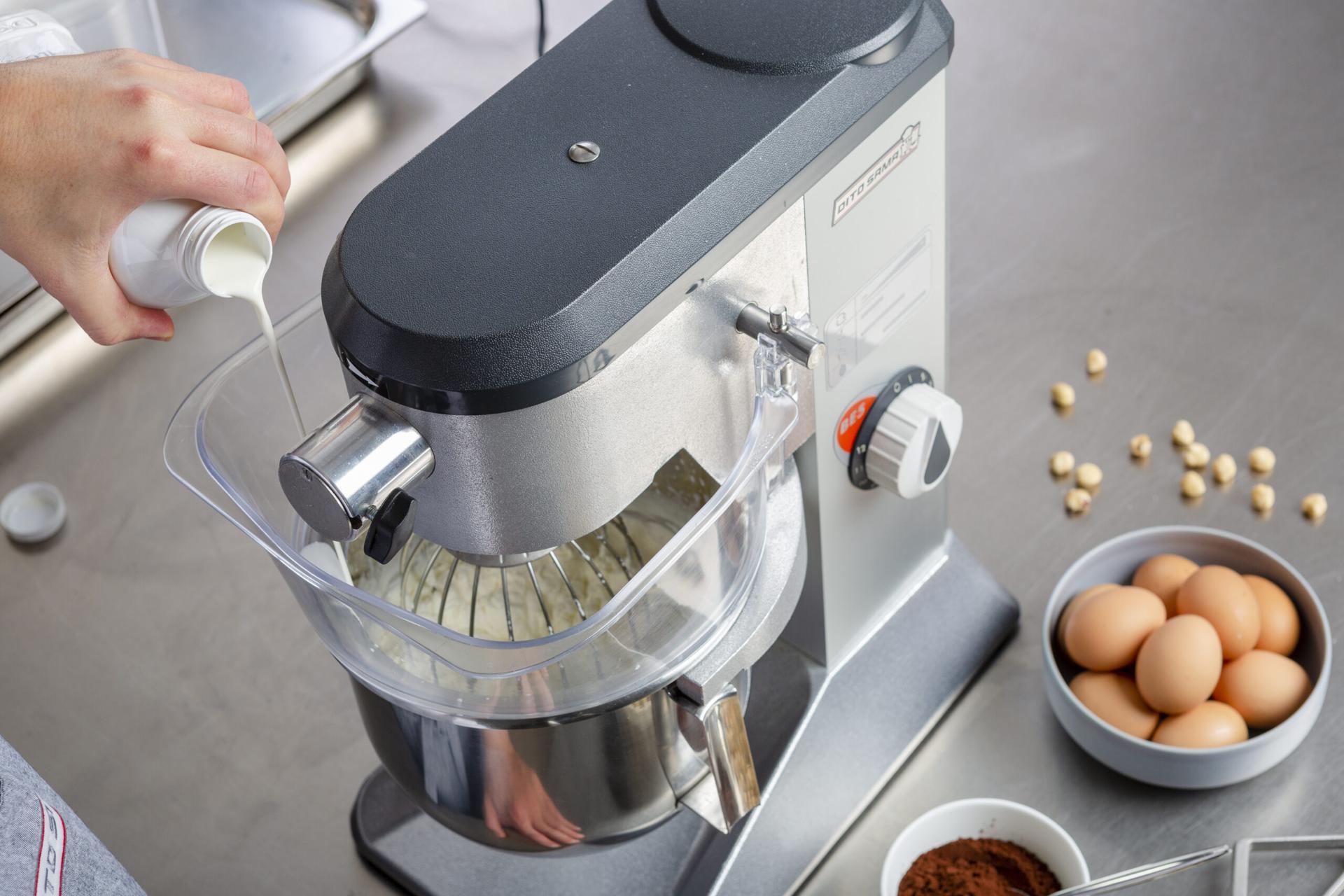
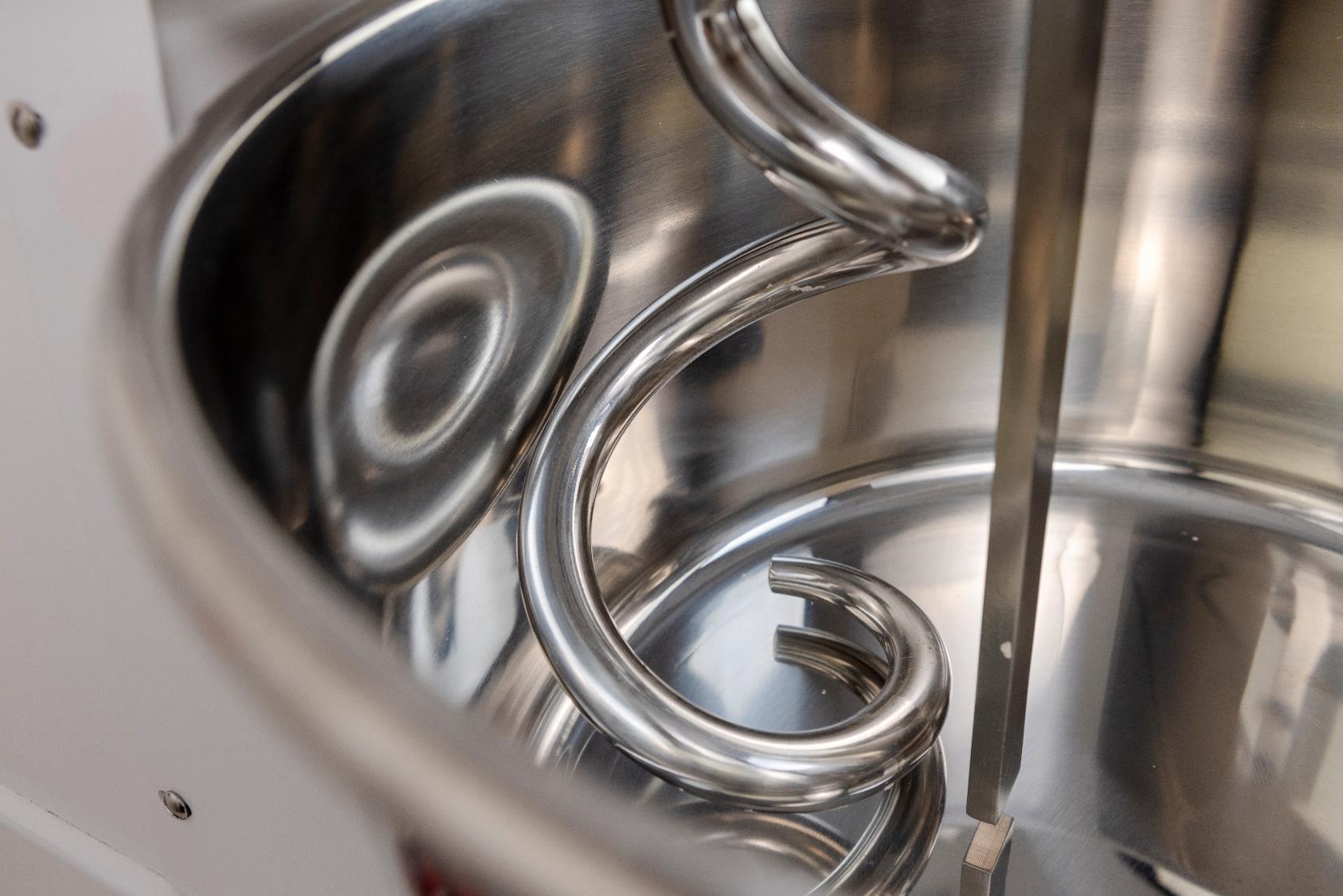
Top Questions to Ask Before Partnering with a Supplier
In addition to evaluating features and pricing, it’s important to assess how well the supplier aligns with your day-to-day operations. A reliable supplier doesn’t just sell you products – they contribute to your kitchen’s efficiency, compliance, and long-term success.
Some suppliers may offer additional services that can bring significant value, including:
- Consultation on layout and equipment planning to help optimize workflow and space utilization.
- Regular service checks and preventative maintenance programs that reduce unexpected breakdowns.
- Access to innovation previews – being among the first to test or adopt the newest appliances and technologies.
- Customized equipment bundles tailored to specific foodservice formats, like bakeries, QSRs, or catering businesses.
These added services can have a substantial impact, especially when scaling your operation or refining your workflow.
Before signing on with a new commercial restaurant equipment supply partner, get the full picture by asking the right questions:
1. What is your experience in the foodservice industry?
2. Do you offer equipment training and support for my team?
3. How do you handle warranty claims and service calls?
4. Can you provide references from businesses similar to mine?
5. What lead times should I expect for standard and custom orders?
6. Do you offer guidance on space planning or kitchen design?
7. What post-sale support is available – both short and long term?
These questions will help you assess whether the supplier can provide not just products, but also the expertise and partnership your business needs to thrive.
A reliable kitchen equipment supplier is more than a vendor – they’re part of your operation’s foundation. With the right support, you’ll gain more than appliances. You’ll gain peace of mind, better performance, and a partner who’s invested in your long-term success.
LAST NEWS

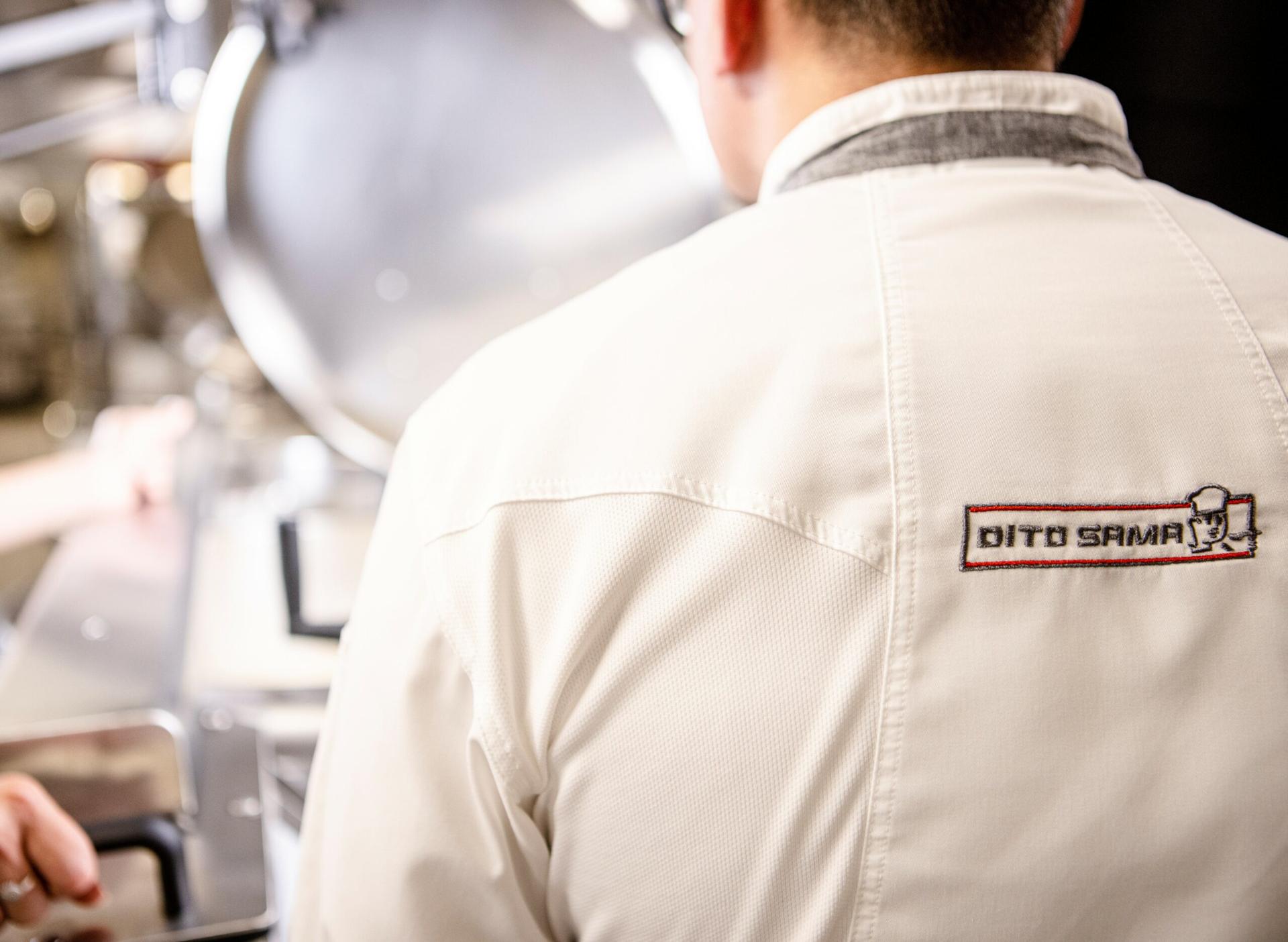

Common Mistakes to Avoid When Choosing Kitchen Appliances
Equipping a kitchen – especially a professional one – is a significant investment. And while it might be tempting to go with the most popular models or the lowest prices, those shortcuts often come at a cost. From mismatched equipment to underpowered machines that can’t handle the volume, there are plenty of pitfalls that can derail a kitchen setup before it even gets started.
In this article, we’ll explore the most common mistakes professionals make when choosing kitchen appliances, how to evaluate the best kitchen appliance brands for your unique needs, and smart tips to guide long-term investments.
Common Pitfalls to Avoid When Investing in Kitchen Equipment
When selecting new equipment, many buyers focus only on features and price. But choosing kitchen appliances for a commercial environment involves balancing performance, durability, energy consumption, and ease of maintenance. Here are some common missteps to avoid:
01.
Prioritizing price over performance:
while budget matters, cheaper appliances often lack the power and resilience needed for high-volume use. This can lead to frequent breakdowns and higher long-term costs.
02.
Ignoring workflow compatibility:
even the best appliance is inefficient if it doesn't fit your kitchen’s flow. Oversized units or poor placement can create bottlenecks and safety risks.
03.
Overlooking cleaning and maintenance:
complex designs or hard-to-clean components slow down turnover and increase sanitation risks. Always check how easy the appliance is to maintain. Is it fully detachable? Is it dishwasher-safe? For how long will the spare parts be available?
04.
Buying consumer-grade equipment for commercial use:
home appliances are not built for professional settings. They wear out quickly and typically don’t meet health and safety standards.
05.
Skipping staff input:
the people using the equipment daily have valuable insight. Involving your team in the decision-making process ensures you choose tools that truly fit your operation.
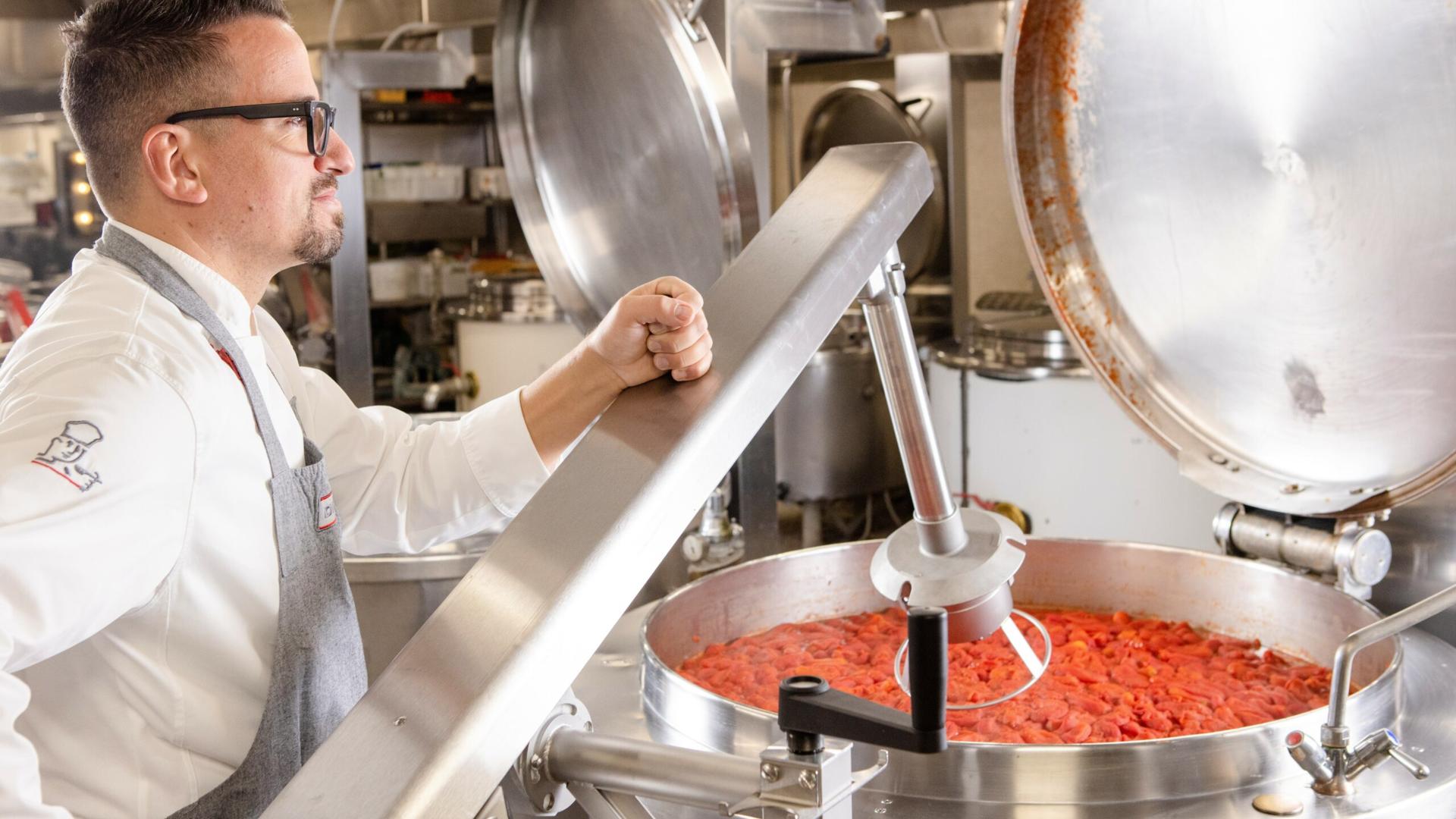

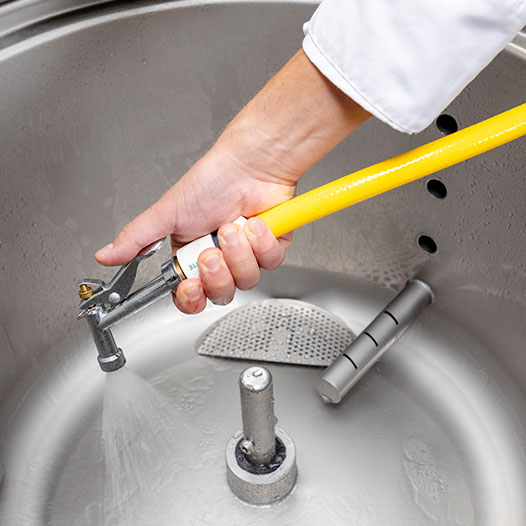
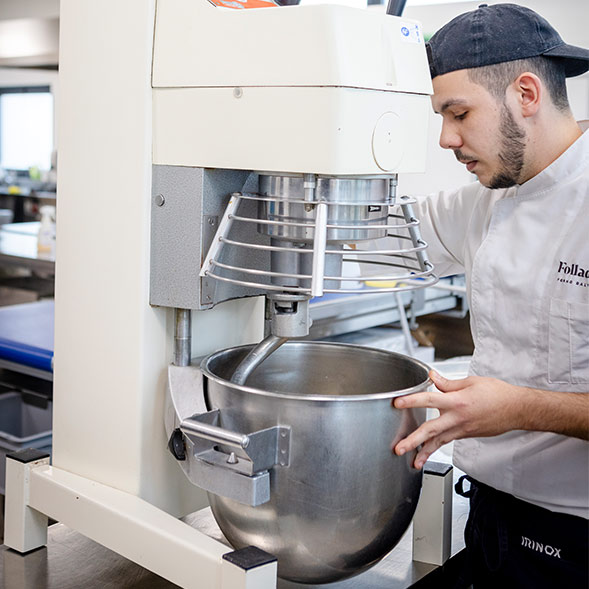
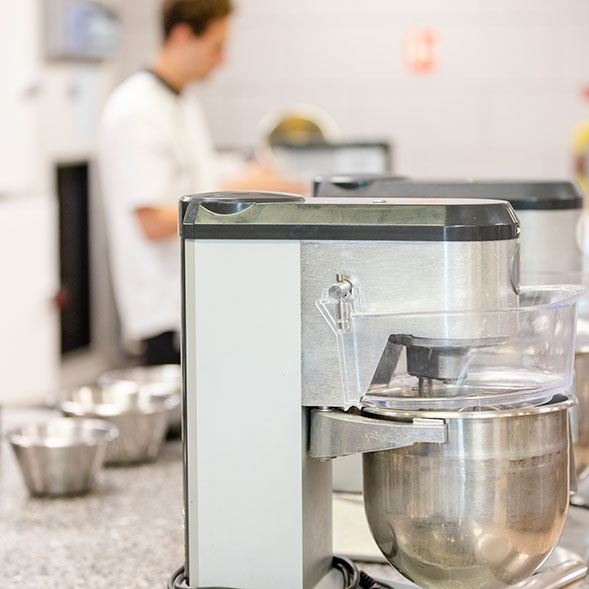

01.
Prioritizing price over performance:
while budget matters, cheaper appliances often lack the power and resilience needed for high-volume use. This can lead to frequent breakdowns and higher long-term costs.

02.
Ignoring workflow compatibility:
even the best appliance is inefficient if it doesn't fit your kitchen’s flow. Oversized units or poor placement can create bottlenecks and safety risks.

03.
Overlooking cleaning and maintenance:
complex designs or hard-to-clean components slow down turnover and increase sanitation risks. Always check how easy the appliance is to maintain. Is it fully detachable? Is it dishwasher-safe? For how long will the spare parts be available?

04.
Buying consumer-grade equipment for commercial use:
home appliances are not built for professional settings. They wear out quickly and typically don’t meet health and safety standards.

05.
Skipping staff input:
the people using the equipment daily have valuable insight. Involving your team in the decision-making process ensures you choose tools that truly fit your operation.
How to Evaluate the Best Kitchen Appliance Brands for Your Needs
Choosing the right kitchen appliance brand isn’t just about name recognition – it’s about how well the tools you bring into your kitchen will support your specific needs. It’s easy to be swayed by popularity or sleek design, but what really counts is how a machine performs when it’s running all day, every day.
Start by thinking about how the brand performs under pressure. Has it been tested in fast-paced, professional environments? Can it deliver consistent results during peak hours? Brands that specialize in commercial kitchen appliances – like Dito Sama – are often better equipped to handle the demands of high-output, high-expectation kitchens.
Next, look at what the brand is known for. Does it focus on performance and longevity? Are its products engineered for repetitive, intensive tasks? These are often signs of thoughtful design meant for professionals – not just home cooks.
It’s also worth digging into the practicalities:
- What kind of warranty is offered?
- What kind of warranty is offered?
- What kind of warranty is offered?
Finally, talk to others in the industry or read reviews from people who run kitchens similar to yours. Their experience often reveals more than a spec sheet can.
Choosing a brand that truly understands what it takes to keep a commercial kitchen running smoothly will save you time, money, and stress in the long run.
Tips for Making Smart, Long-Term Equipment Investments
Buying the best kitchen appliances isn’t just about the upfront purchase – it’s about what those tools do for your business over time. Here’s how to make smart, future-proof choices:

Think in systems, not in silos:
appliances should work together. Choose tools that integrate well into your overall workflow, reducing steps and manual labor.
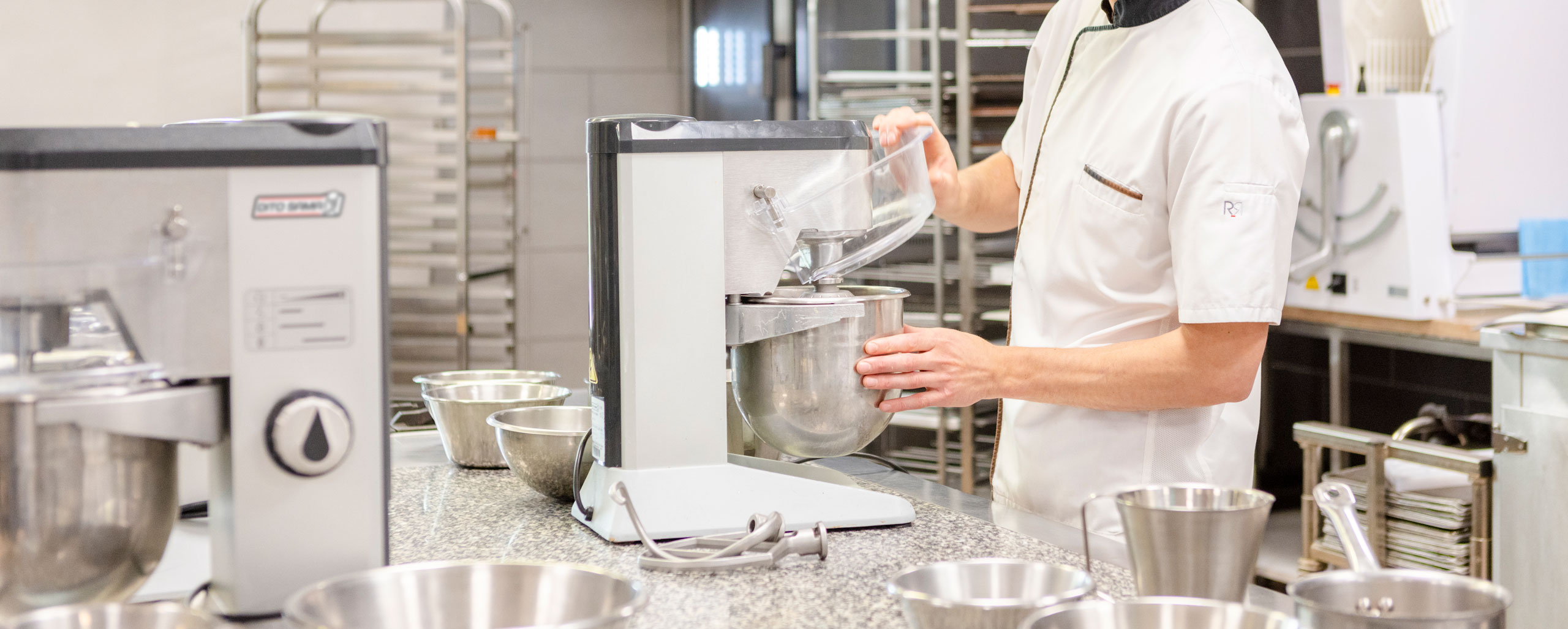
Plan for growth:
select equipment that can scale with your business. Adjustable capacities, modular designs, or upgradeable components add long-term value.
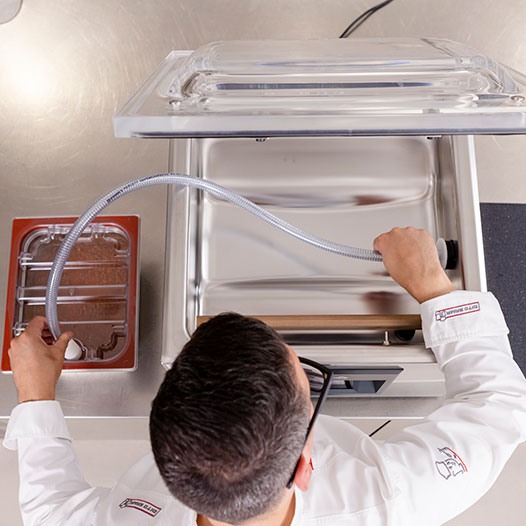
Balance innovation with practicality:
cutting-edge tech is exciting, but only if it solves real problems in your kitchen. Prioritize reliability and usability over flashy features.
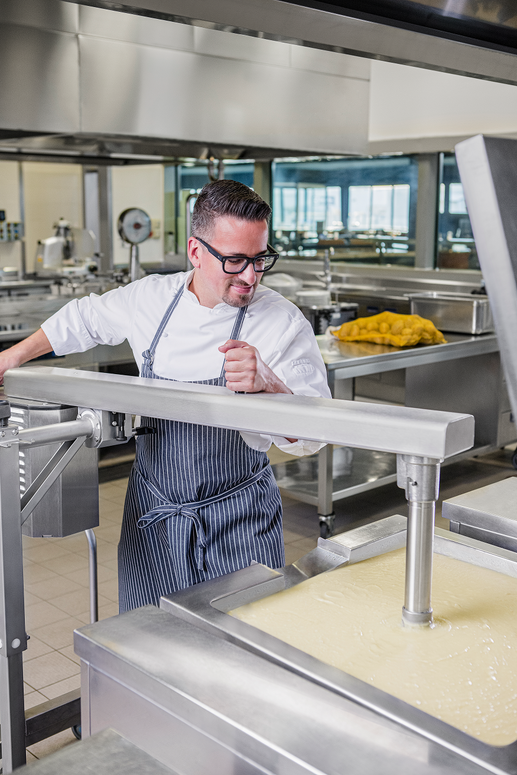
Invest in training:
even the best appliances are only as good as the people using them. Make sure your team is trained to operate and maintain new equipment properly.
With a thoughtful approach and a focus on professional-grade performance, you’ll avoid costly mistakes and build a kitchen setup that’s equipped to deliver – day after day.
LAST NEWS



Essential Appliances for Setting Up a Fully Equipped Commercial Kitchen
Designing a commercial kitchen from the ground up is a complex task – but it’s also one of the most exciting phases of launching or expanding a food business. The right equipment doesn’t just fill a space; it shapes how efficiently your team can work, how safe the environment is, and how consistent your output will be. Before the burners are lit or the mixers start spinning, it’s critical to align your setup with the core requirements of a commercial kitchen.
In this guide, we’ll walk through the must-have commercial kitchen appliances, key safety and hygiene requirements, and best practices for organizing your space to boost workflow.
Essential Equipment Every Commercial Kitchen Must Have
Every kitchen tells its own story, shaped by the type of cuisine, the size of the team, and the rhythm of daily service. But behind every great kitchen is a well-thought-out lineup of essential tools. Before diving into specialty appliances or layout tweaks, it’s important to focus on the categories of equipment that form the operational backbone of any professional kitchen. From prep to storage, these appliances drive productivity and consistency from the ground up:
01.
Food preparation equipment:
this includes professional food processors, slicers, hand mixers, and vegetable cutters. These appliances drastically reduce manual labor and ensure consistent prep.
02.
Cooking equipment:
ovens (convection or combi), fryers, grills, steamers, and induction cooktops form the heart of most kitchens. Choose models that balance output, energy efficiency, and durability.
03.
Cold storage units:
from reach-in refrigerators to undercounter freezers, reliable temperature control is critical for food safety.
04.
Sanitation systems:
high-capacity dishwashers, handwashing stations, and waste management setups help maintain cleanliness and comply with regulations.
05.
Storage solutions:
shelving, bins, and secure dry storage areas keep supplies organized and accessible, reducing clutter and improving kitchen flow.
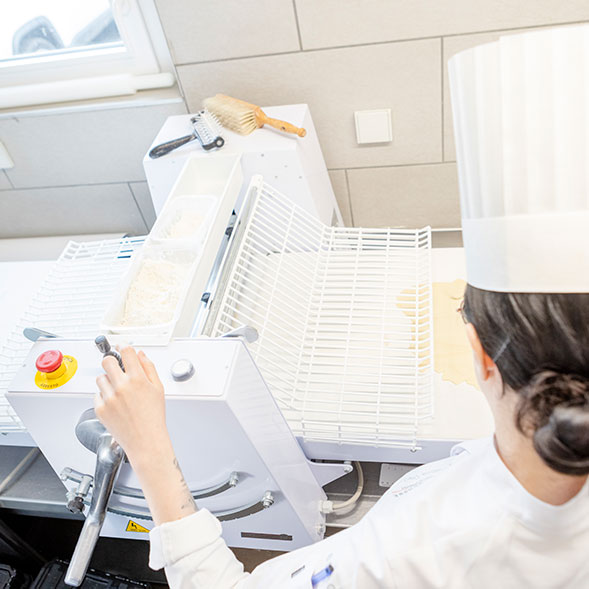


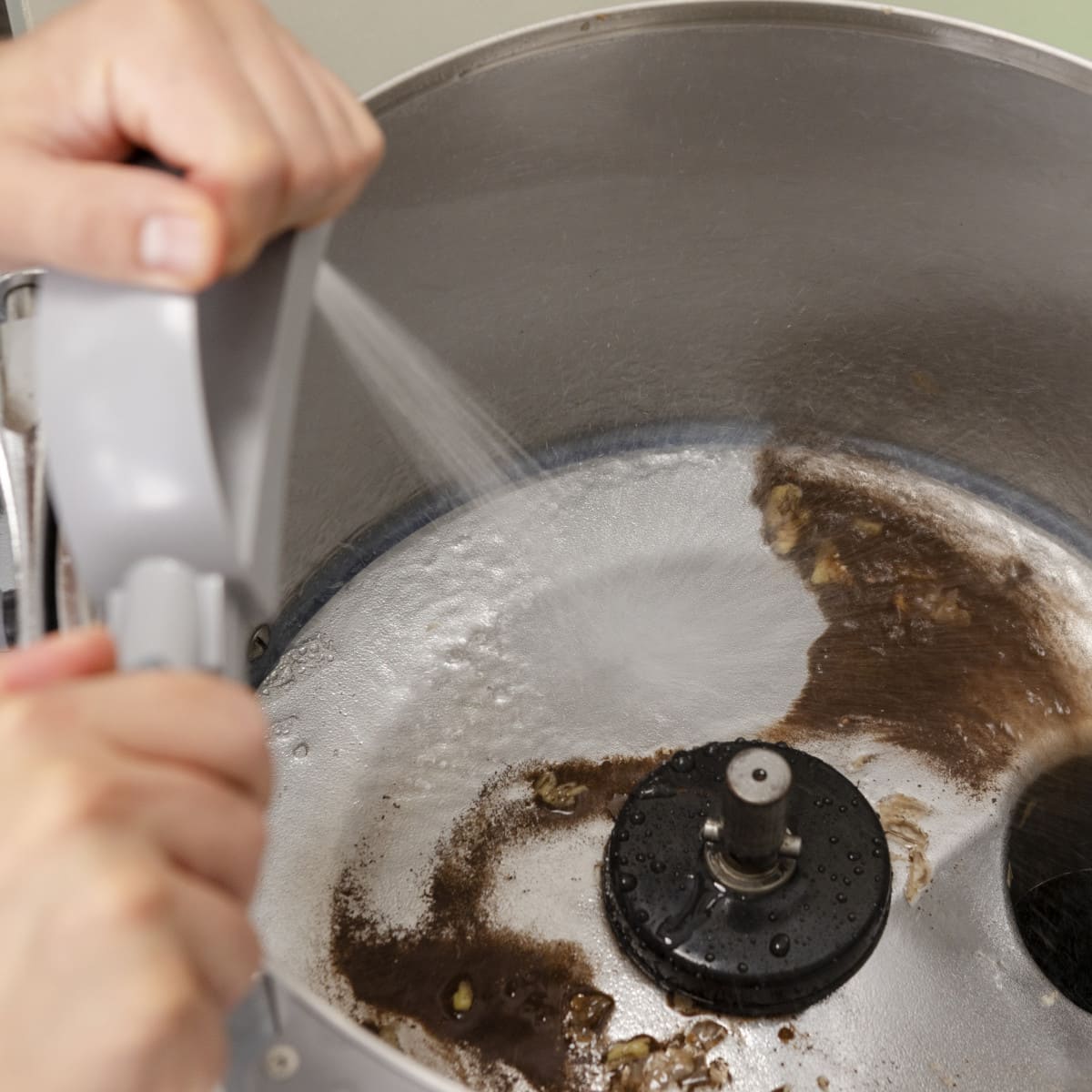
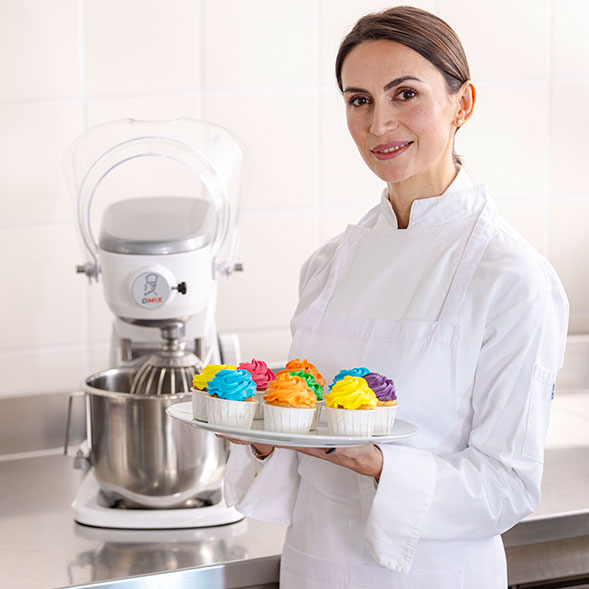

01.
Food preparation equipment:
this includes professional food processors, slicers, hand mixers, and vegetable cutters. These appliances drastically reduce manual labor and ensure consistent prep.

02.
Cooking equipment:
ovens (convection or combi), fryers, grills, steamers, and induction cooktops form the heart of most kitchens. Choose models that balance output, energy efficiency, and durability.

03.
Cold storage units:
from reach-in refrigerators to undercounter freezers, reliable temperature control is critical for food safety.

04.
Sanitation systems:
high-capacity dishwashers, handwashing stations, and waste management setups help maintain cleanliness and comply with regulations.

05.
Storage solutions:
shelving, bins, and secure dry storage areas keep supplies organized and accessible, reducing clutter and improving kitchen flow.
When selecting commercial kitchen equipment, focus on multi-functionality, durability, and ease of cleaning. Brands like Dito Sama design their tools to meet these exact needs, supporting chefs with durable appliances built for volume, speed, and precision.
Safety and Hygiene Standards for Commercial Kitchens
Equipping your kitchen also means meeting strict safety and hygiene regulations. Commercial kitchen requirements vary by location, but generally include the following:
- Proper ventilation systems to control smoke, odors, and heat.
- Handwashing stations located in easily accessible areas.
- Non-slip flooring and clear walkways to prevent accidents.
- Food-safe surfaces for prep and storage, such as stainless steel worktops.
- Temperature monitoring systems to ensure that cold and hot foods are stored and served safely.
In addition to facility design, your equipment plays a crucial role in meeting hygiene standards. Appliances with removable parts, seamless construction, and dishwasher-safe components simplify sanitation and reduce risk.
Many commercial kitchen appliances from Dito Sama are built with these hygiene-first features in mind – designed to meet international food safety standards while remaining practical and durable.
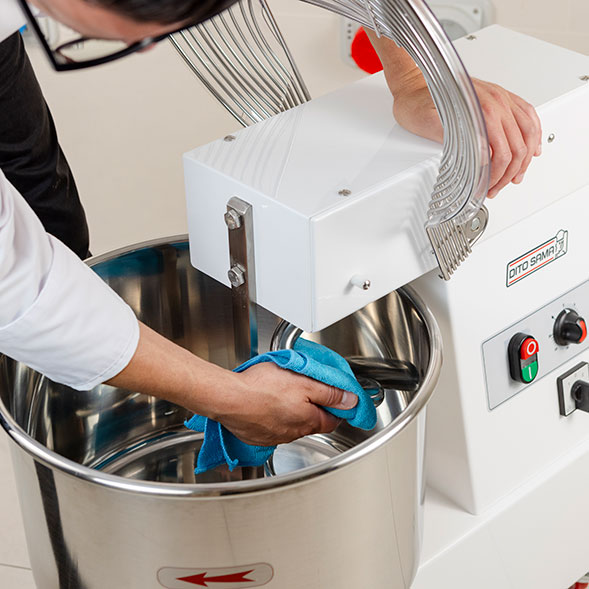

How to Optimize Space and Workflow in a Commercial Kitchen
Even with the right appliances, a poorly organized kitchen can slow down service and create bottlenecks. Optimizing layout and workflow is essential to getting the most from your space.
Start with a layout that reflects your operation’s needs. The classic kitchen work triangle – connecting prep, cooking, and cleaning stations – remains a useful principle. In larger kitchens, zoning by task (e.g., hot line, cold prep, pastry) can reduce traffic and cross-contamination.
Other workflow tips include:
- Group related appliances together (e.g., cutters and slicers near prep counters, blenders near cold storage).
- Allow for clear, uninterrupted paths between stations.
- Choose compact or multifunctional equipment to free up floor space.
- Use vertical space for shelving and hanging racks to maximize storage.
High-performance commercial kitchen equipment – especially compact or modular designs – can dramatically improve your use of space. Dito Sama’s range of prep tools, for instance, is built with real kitchens in mind, offering power and precision without sacrificing flexibility.
Ultimately, designing a compliant and efficient kitchen isn’t about buying the most equipment – it’s about selecting the right appliances that work in harmony with your team and your space.
LAST NEWS

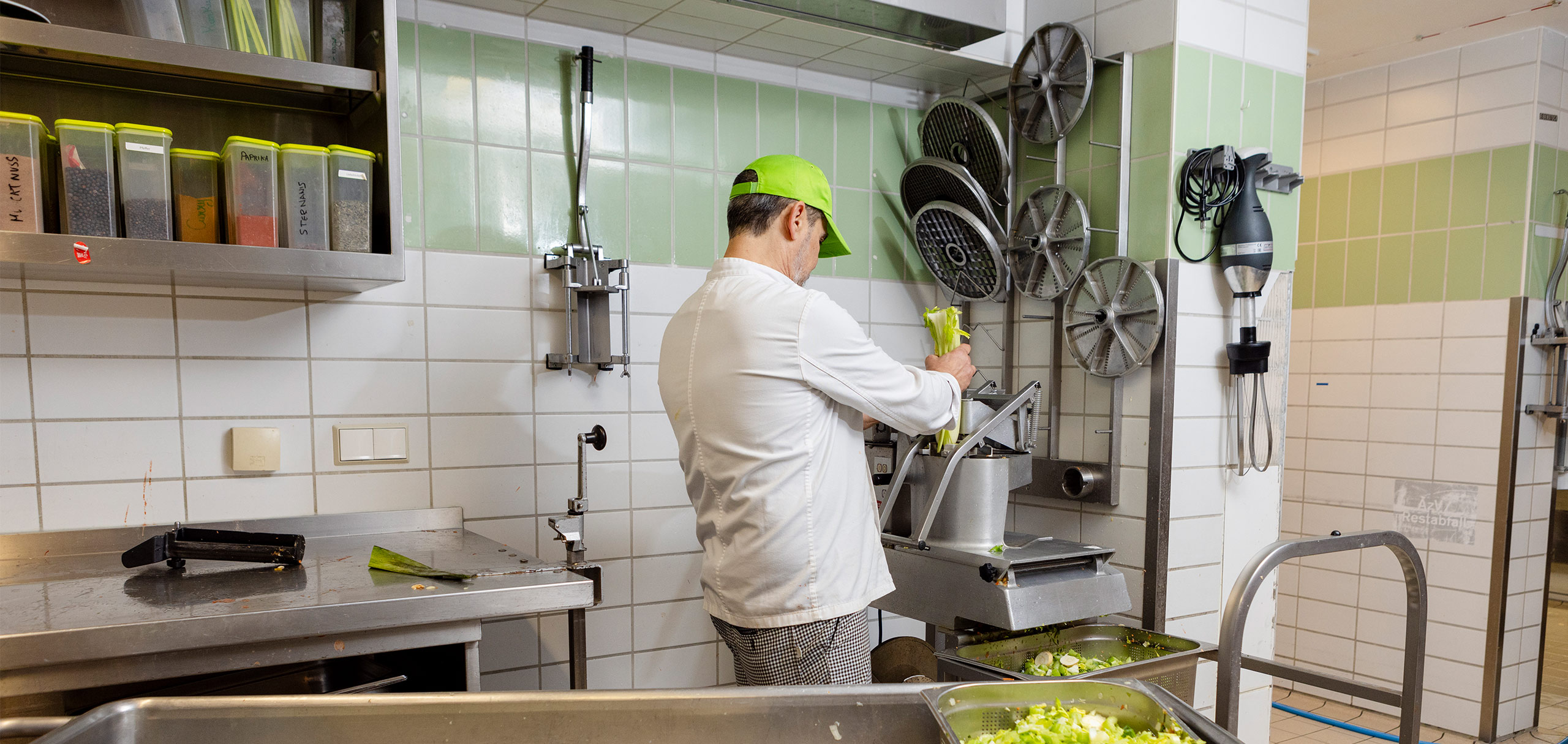

Choosing the Right Vegetable Slicer for Precision and Speed
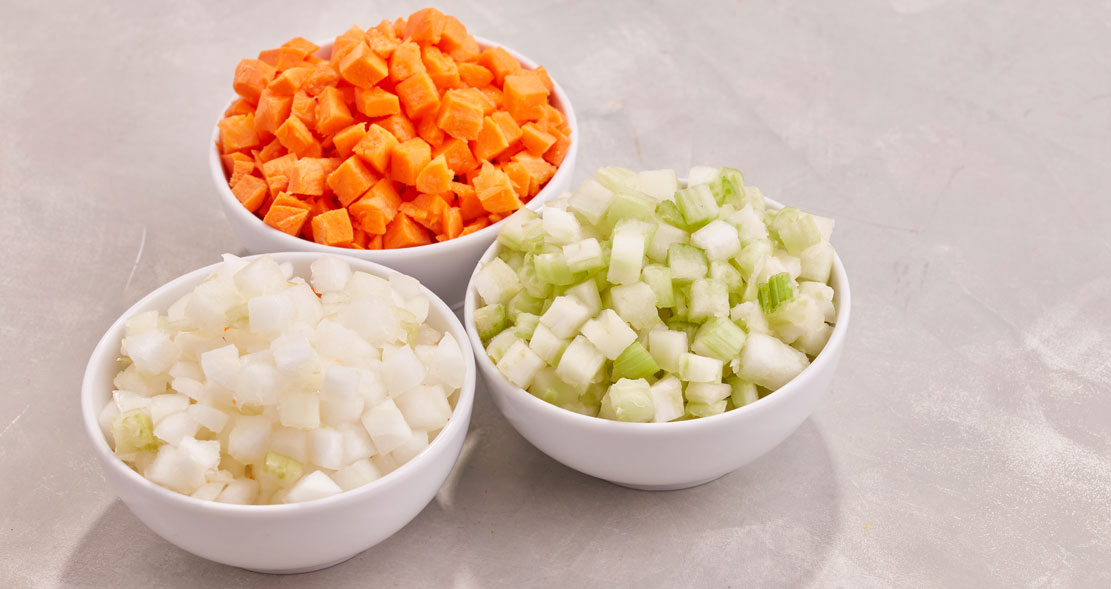
From perfect brunoise to paper-thin cucumber rounds, slicing vegetables well is both an art and a science. While knife skills are essential, no chef can argue with the speed and precision of a high-quality slicer – especially when there’s a full prep list waiting. Whether you're handling delicate produce or bulk root vegetables, the right equipment helps maintain consistency, elevate presentation, and shave hours off your mise en place.
Whether you're running a fast-paced kitchen or scaling up production in a bakery or deli, a commercial vegetable slicer can make all the difference. But with so many models on the market, how do you choose the best vegetable slicer for your needs?
This guide explores the essential features to consider, introduces some of the top-rated slicers for professional kitchens, and shares practical maintenance tips to keep your equipment in peak condition.
Factors to Consider When Selecting a Vegetable Slicer
Not all vegetable slicers are built the same. Some are made for occasional use, while others are designed for intensive, all-day prep. Here’s what to keep in mind when choosing the best food slicer for vegetables in a commercial kitchen:
Beyond individual features, consider how the slicer fits into your kitchen’s workflow. For example, a compact model may be ideal for tight spaces, while larger units with continuous feed systems are better suited to high-volume production. If you are limited in space, consider choosing a combined cutter-vegetable slicer.
Top-Rated Commercial Vegetable Slicers for High-Volume Use
When selecting a commercial vegetable slicer, quality and reliability should always come first. Kitchens that rely on consistent output need equipment that performs well under pressure – day after day, shift after shift.
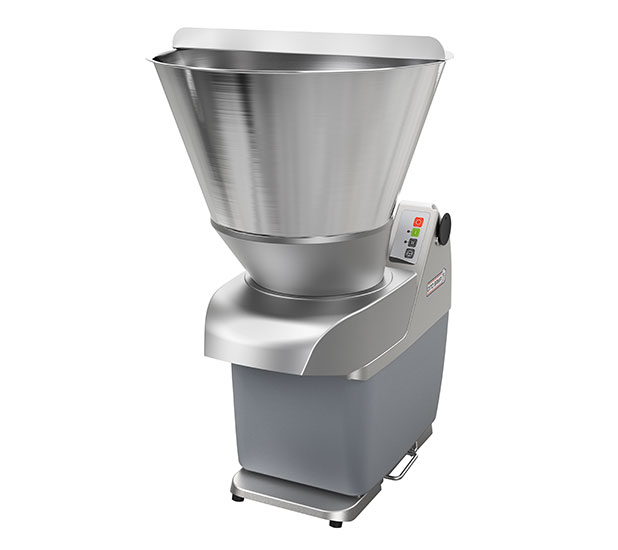
Here’s what to look for in a top-tier commercial vegetable slicer:
– Continuous feed capability: ideal for large batches, these systems reduce downtime and increase efficiency by allowing uninterrupted slicing.
– Heavy-duty construction: metal frames, reinforced slicing chambers, and industrial-grade motors all contribute to performance and longevity.
– Precision engineering: units that offer fine control over slice thickness and cut type help improve presentation and reduce waste.
Dito Sama’s vegetable slicers are designed with this in mind. Their commercial models are equipped with powerful motors, ergonomic designs, and interchangeable discs to handle a wide range of slicing tasks – from paper-thin cucumbers to firm root vegetables. The focus is always on precision, speed and product durability, helping chefs and prep teams deliver consistently high-quality results with minimal effort.
When comparing different options, think about how often the slicer will be used, who will operate it, and which tasks it will need to perform most frequently. Investing in a professional slicer tailored to your production level pays off in saved time, better consistency, and a smoother kitchen workflow.
How to Maintain and Clean Your Vegetable Slicer Properly
Even the best vegetable slicer won’t perform well if it’s not properly cared for. Routine maintenance and cleaning are essential to ensure both longevity and food safety.
Start with daily cleaning routines:
- Disassemble the slicer after each use: this prevents food buildup and makes it easier to clean all components thoroughly.
- Wash blades and attachments with warm, soapy water – or in the dishwasher if they’re rated for it, as all Dito Sama’s slicers are. Avoid harsh abrasives that could dull the blades or damage coatings.
- Wipe down the body of the slicer with a damp cloth and sanitizing solution. Pay attention to joints and crevices where residue can accumulate.
On monthly basis (depending on usage):
- Inspect blades for wear or dullness, and sharpen or replace them as needed.
- Check moving parts and motor function, tightening any loose screws and lubricating as recommended by the manufacturer.
Dito Sama slicers are built with maintenance in mind. Their components are designed for easy access, and many parts are dishwasher-safe, helping your team clean quickly and get back to prep work without delay.
With proper care, a professional-grade vegetable slicer will deliver reliable performance for years, reduce downtime, and ensure every dish leaves the kitchen looking – and tasting – its best.
LAST NEWS

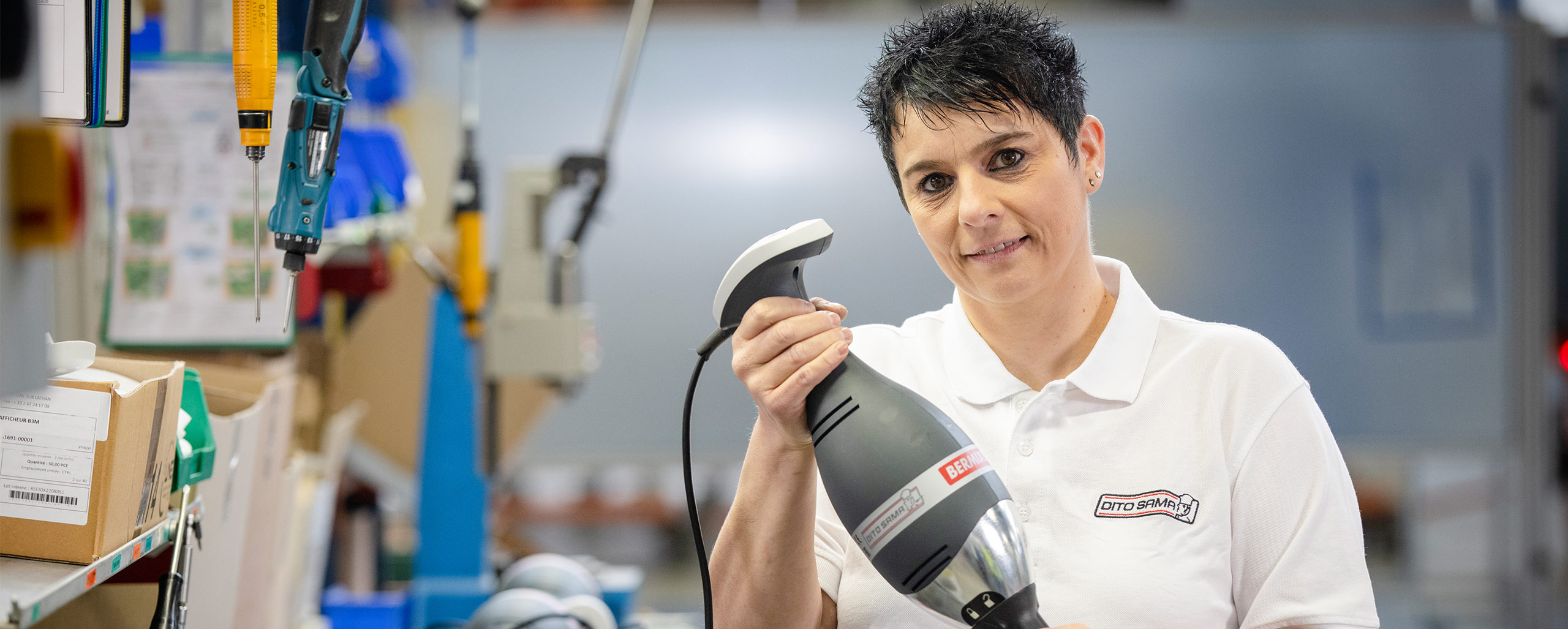
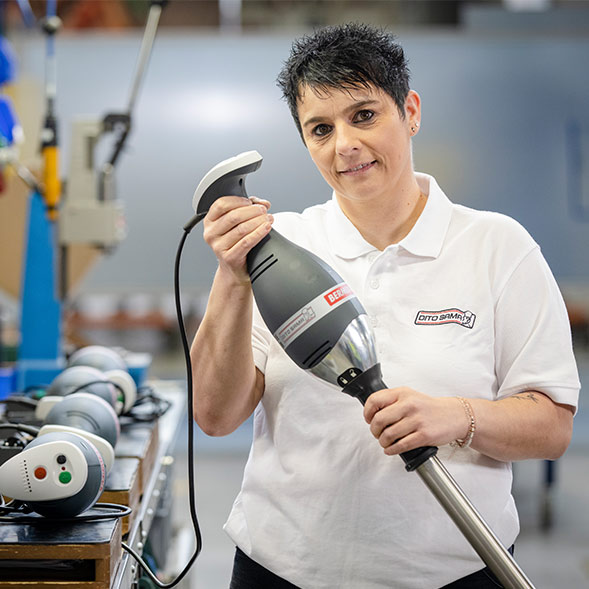
How to Select the Best Hand Mixer for a Professional Kitchen
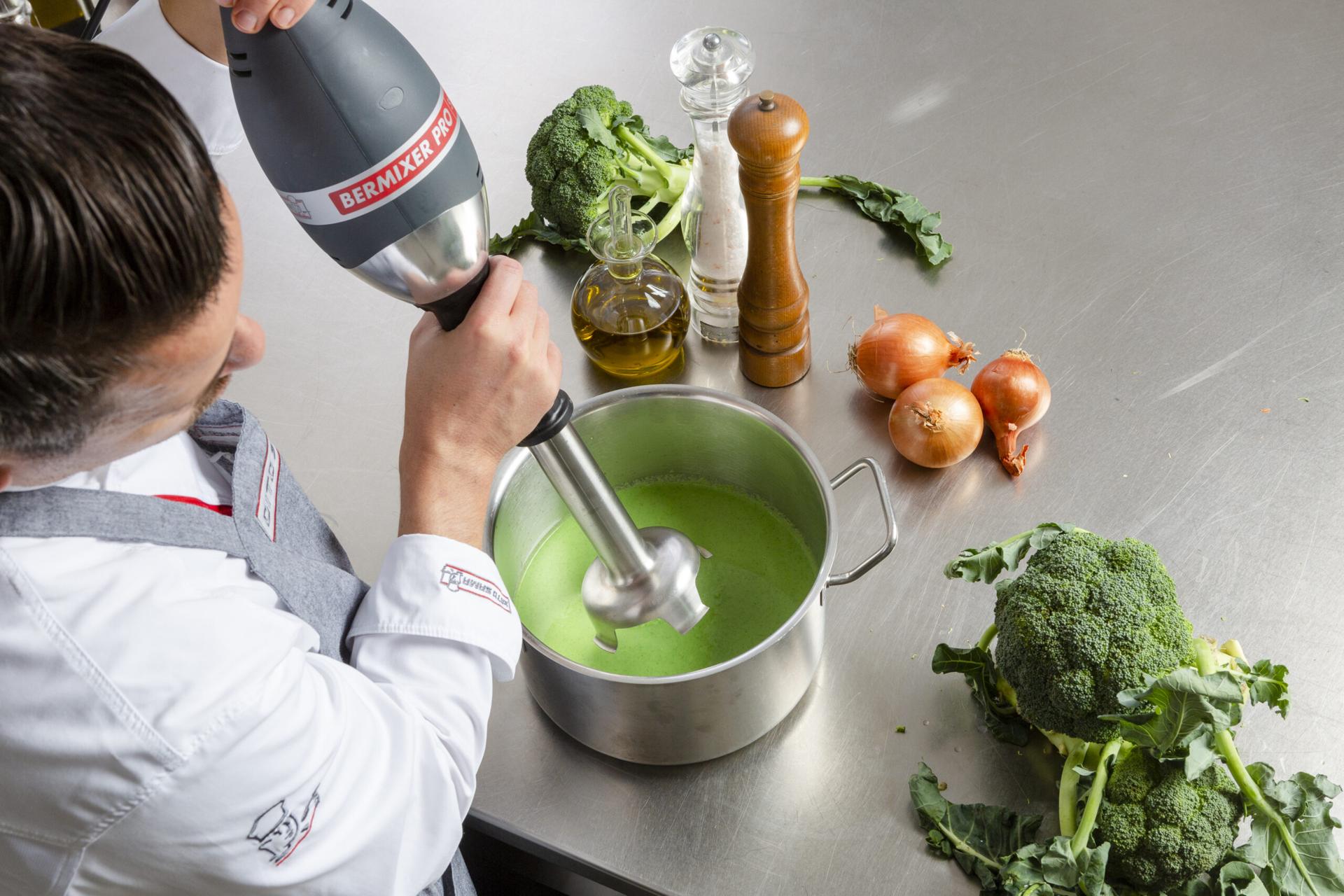
A professional hand mixer might seem like a modest tool, but in a busy kitchen, it's often a powerhouse of precision and versatility. Whether you're whipping cream, folding batters, or emulsifying sauces, having the right model in your hands can make a tangible difference in both speed and quality.
In this guide, we'll explore what to look for when selecting the best hand mixer for baking and beyond, compare top-performing models, and share practical maintenance tips to keep your mixer running smoothly.
Key Features to Look for in a High-Performance Hand Mixer
Choosing a professional hand mixer is about more than just speed – it’s about ensuring peak performance during extended use and across a variety of culinary applications. In a professional setting, reliability and adaptability are non-negotiable. Here’s a deeper look at the most important features to prioritize:
look for mixers with motors starting at 200 watts or higher for commercial use. High torque is essential for maintaining power through heavy doughs, dense batters, or prolonged whipping without stalling or overheating.
more than just multiple speeds, the best mixers offer precision speed control – allowing gradual increases to prevent splatter and giving chefs full control over texture and consistency.
a professional hand mixer should feel stable and natural in hand. A non-slip, contoured grip, and well-balanced weight distribution make a huge difference when the tool is used for long periods.
look for die-cast metal housings, reinforced internal gears, and stainless steel attachments. These components not only ensure longevity but also allow the mixer to withstand continuous, high-volume tasks without breakdowns.
commercial kitchens require fast turnaround times between tasks. A good mixer should have detachable, dishwasher-safe parts, minimal crevices for food build-up, and an exterior that wipes down easily for consistent hygiene.
depending on your kitchen’s needs, choosing a mixer with the right accessory options can greatly increase its versatility. Look for:
-
- whisks and beaters for emulsifying, whipping, and folding;
- multiple tube lengths for different mixing depths and container sizes
- a hands-free holder or stand for stability during prolonged mixing
- optional wall brackets or storage solutions for compact kitchens
These additional tools ensure the mixer adapts to a wide variety of professional tasks, saving time and increasing precision.
Professional models are also expected to offer a long service life. That’s why investing in a hand mixer that’s specifically designed for commercial kitchens is worth every penny.
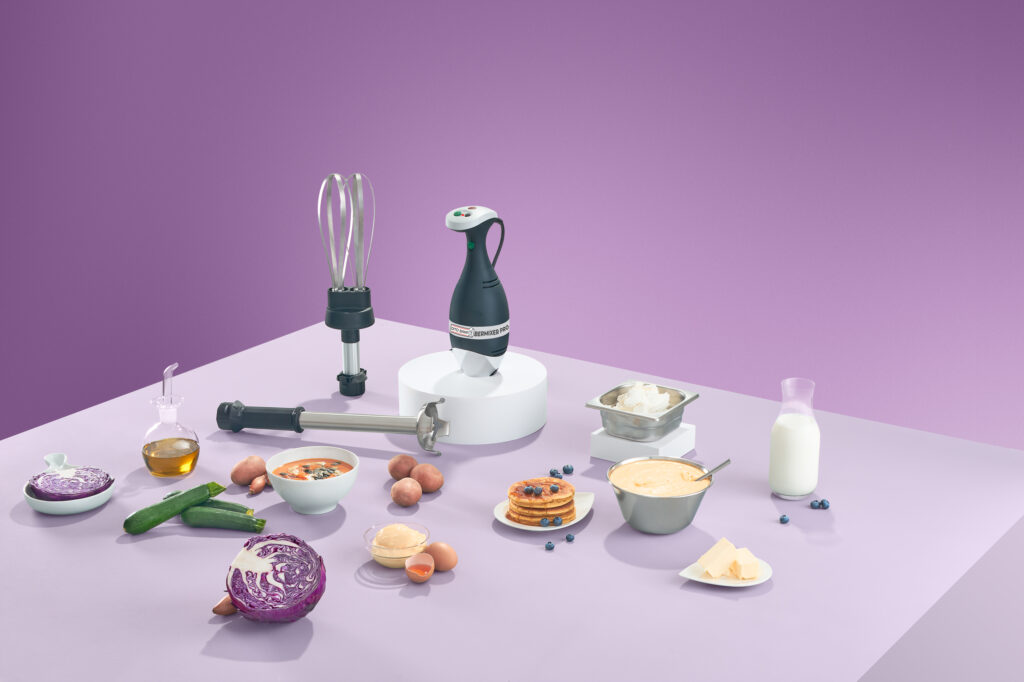
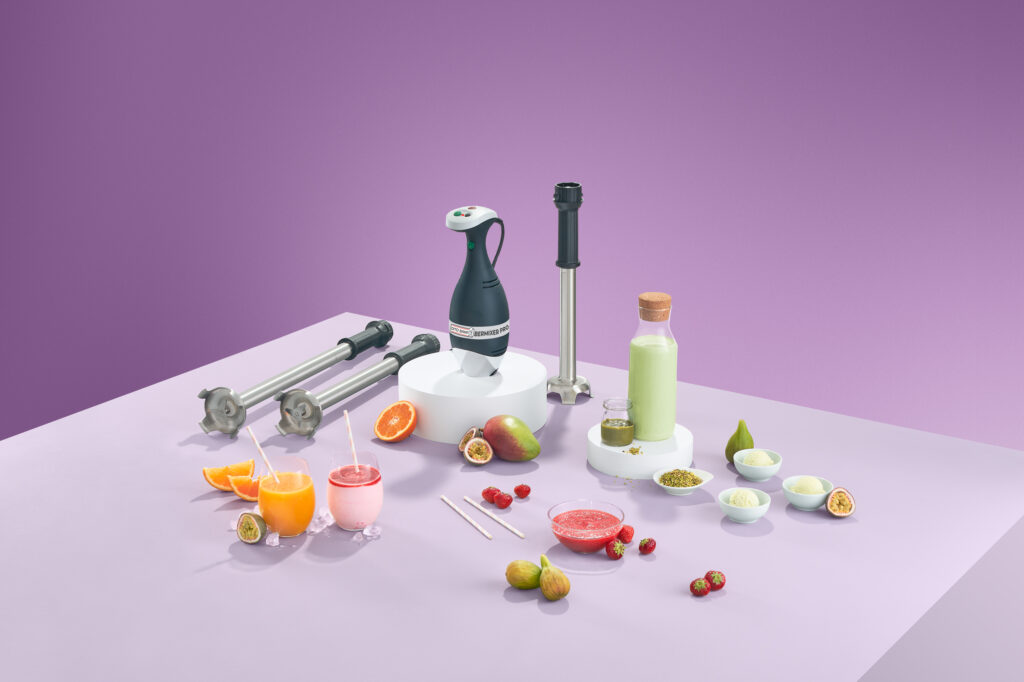
Top Hand Mixers for Professional Kitchens: A Comparison
While there are many hand mixers on the market, only a few are truly suitable for professional environments. Models designed for domestic use often fall short in terms of power, endurance, and build quality.
Look for mixers with features such as continuous run capacity, metal gear systems, and variable speed control with overload protection. These allow the mixer to perform reliably even under intense daily use.
Hand mixers from Dito Sama are engineered with commercial demands in mind. Built for precision, balance, and power, they’re ideal for bakeries, pastry kitchens, and restaurants that need reliable tools day in and day out. Their intuitive design ensures comfort and safety while maintaining consistency in every batch.
Before committing to a purchase, consider the scale and frequency of your mixing tasks. A lightweight but powerful mixer may be perfect for fast-paced prep stations, while a more robust unit is better suited to high-volume production.
Hand Mixer Maintenance Tips for Long-Lasting Performance
Even the best quality hand mixers need regular maintenance to stay at peak performance. Following a few best practices can extend the life of your appliance and prevent downtime.
Dito Sama’s professional hand mixers are designed for longevity, with reinforced housings, easily replaceable parts, and support that makes upkeep easy and efficient. By incorporating simple habits into your kitchen routine, you ensure your mixer remains a reliable part of your workflow.
LAST NEWS



Food Processor Uses: How This Tool Transforms Kitchen Efficiency
What is a food processor used for? If you’ve ever worked in a commercial kitchen, you know the answer goes far beyond chopping vegetables. A food processor is one of the most versatile and time-saving tools a professional chef can rely on. With the right machine and attachments, this single appliance can replace hours of manual labor, delivering speed, consistency, and quality – all essential to a high-functioning kitchen.
In this article, we’ll explore the full range of food processor uses, offer practical tips on how to use a food processor efficiently, and guide you through choosing the right accessories to unlock its full potential.
The Many Functions of a Food Processor in a Professional Kitchen
From prep work to precision tasks, commercial food processors are built to handle a variety of kitchen responsibilities. Their core advantage lies in how much time and effort they save when handling repetitive tasks. Some of the most common uses for a food processor include:
01.
Chopping and mincing
vegetables, herbs, nuts, and even meats can be processed in seconds.
02.
Slicing and shredding:
with the proper discs, a food processor delivers uniform cuts that improve cooking consistency and presentation.
03.
Mixing and kneading:
doughs, batters, and sauces come together effortlessly thanks to strong motors and specialty blades.
04.
Blending and emulsifying:
smooth purées, dressings, and emulsified sauces are easily achieved without switching to a separate blender.
05.
Grinding:
from spices to breadcrumbs to firm cheeses, processors make light work of tough ingredients.


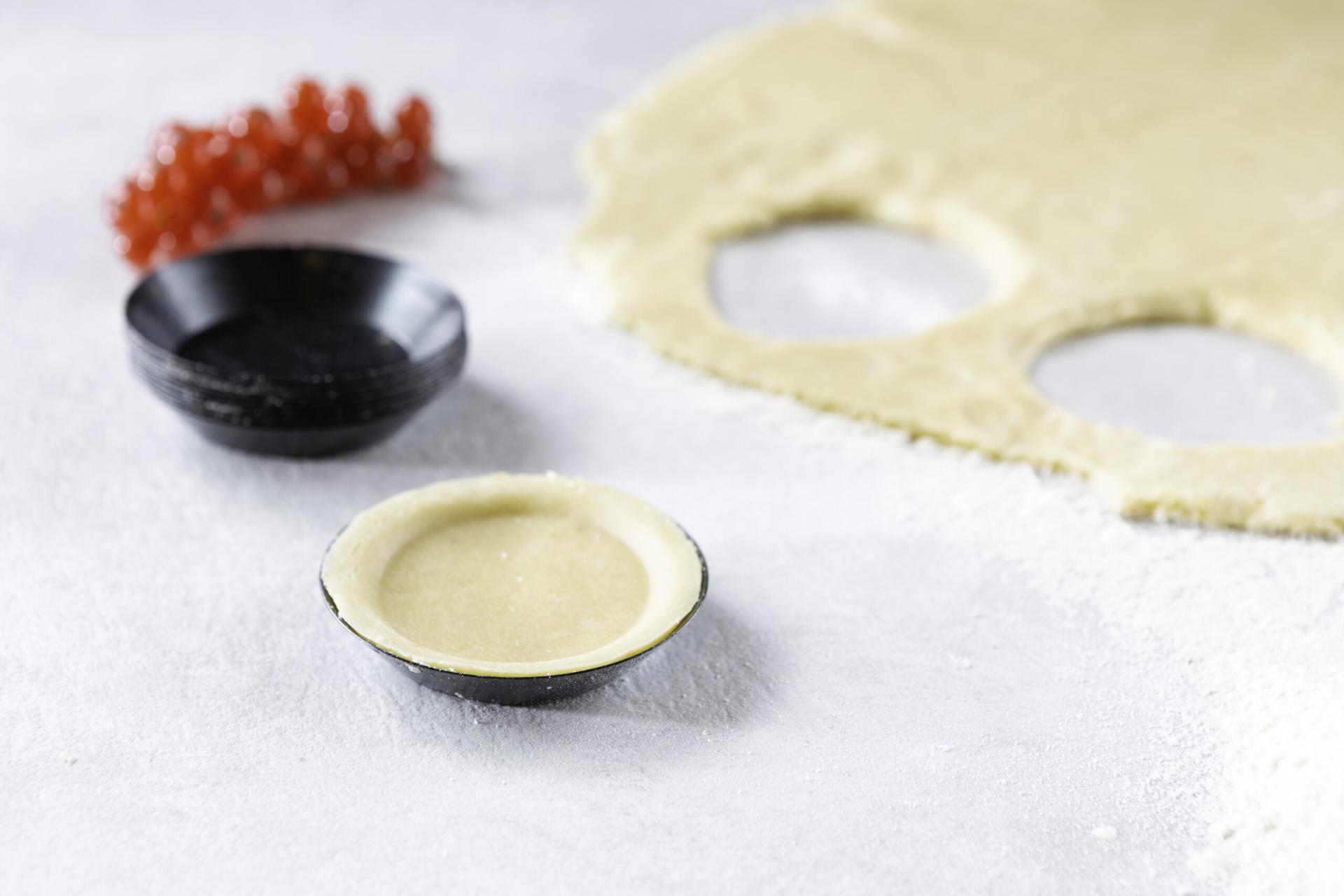

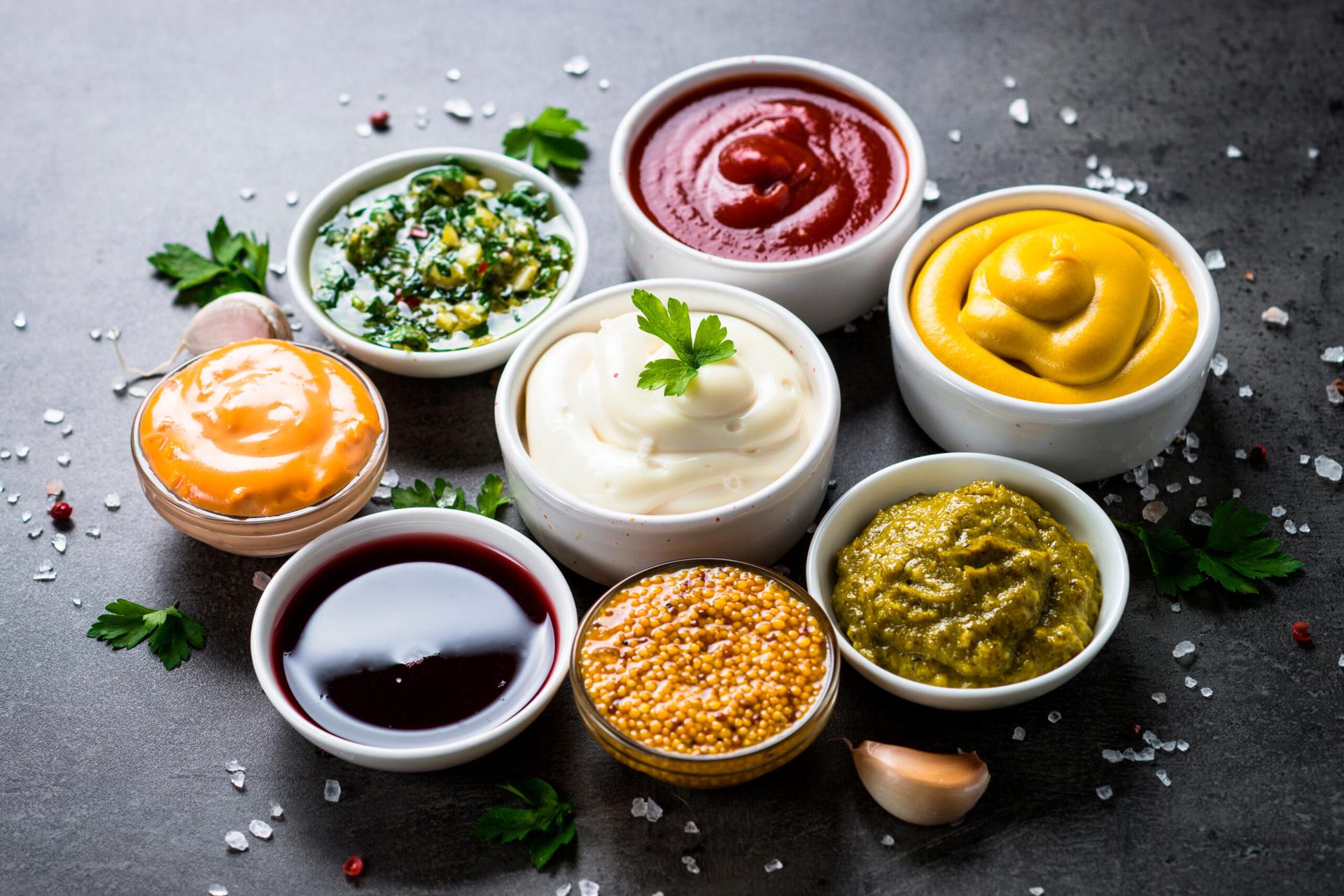

01.
Chopping and mincing
vegetables, herbs, nuts, and even meats can be processed in seconds.

02.
Slicing and shredding:
with the proper discs, a food processor delivers uniform cuts that improve cooking consistency and presentation.

03.
Mixing and kneading:
doughs, batters, and sauces come together effortlessly thanks to strong motors and specialty blades.

04.
Blending and emulsifying:
smooth purées, dressings, and emulsified sauces are easily achieved without switching to a separate blender.

05.
Grinding:
from spices to breadcrumbs to firm cheeses, processors make light work of tough ingredients.
In essence, a food processor is a multi-tool that adapts to the needs of any shift – especially when time, precision, and volume are critical.
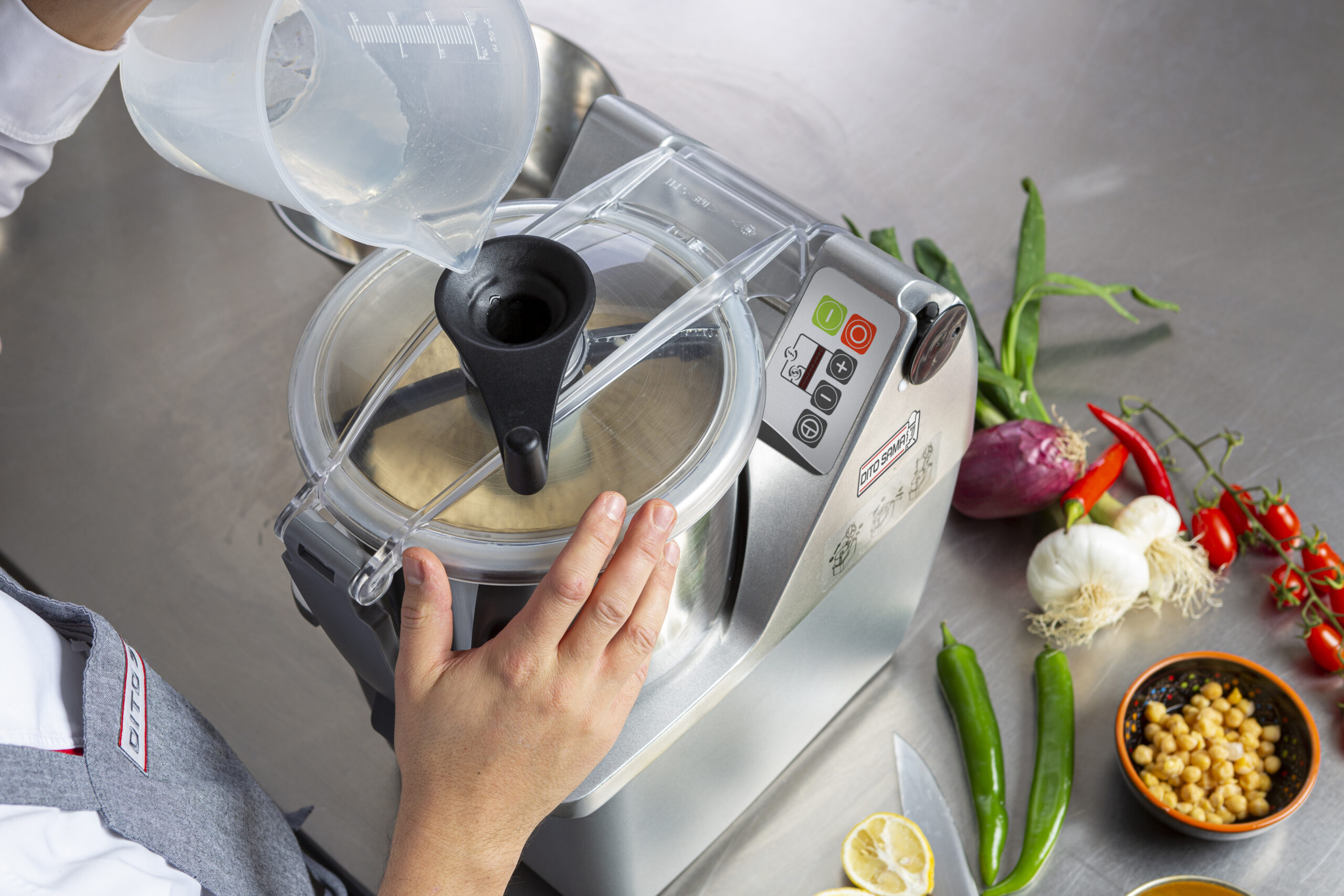
How to Use a Food Processor for Maximum Productivity
Getting the most from your food processor isn’t just about flipping a switch. To truly maximize productivity, professional kitchens should think about how this tool integrates into daily routines.
First, make sure staff are trained not only on basic operation, but also on how to match attachments to tasks, portion ingredients correctly, and clean the machine safely. This prevents downtime and ensures optimal performance.
Plan prep workflows so the processor is used in batches – processing all the carrots, onions, or cheese for a service window in one go is far more efficient than repeated, stop-start use. Prepping mise en place with a food processor saves valuable time, reduces fatigue, and frees up chefs for more complex culinary work.
High-quality commercial food processors, like those from Dito Sama, are designed with these efficiencies in mind. Their durable components, easy-to-use controls, and powerful motors mean you can depend on them shift after shift.
Choosing the Right Attachments for Different Culinary Tasks
One of the greatest strengths of a commercial food processor lies in its adaptability. With the right accessories, a single machine can handle a broad spectrum of kitchen tasks with speed and precision.
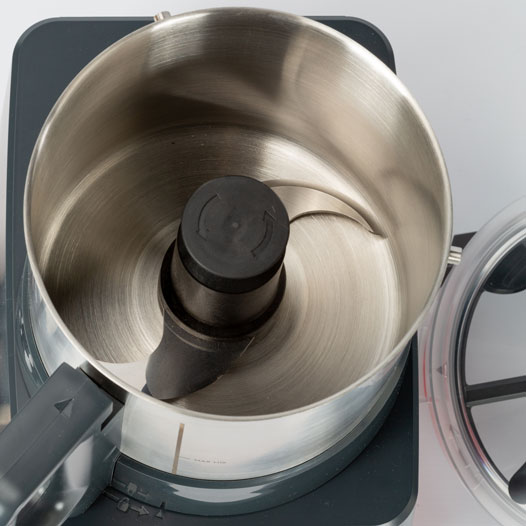
S-blades
are ideal for chopping, mixing, and pureeing a variety of ingredients with uniform consistency.

Slicing discs
come in different thicknesses, allowing for precise cuts – from delicate vegetables to firm roots – ensuring even cooking and consistent presentation.
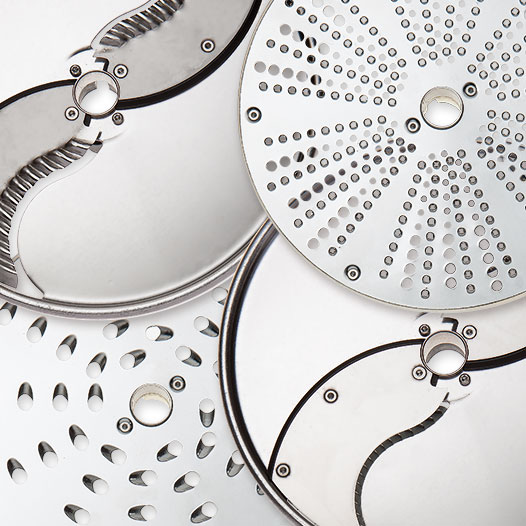
Julienne and grating discs
help speed up prep for salads, garnishes, or cheese-based dishes, all while keeping output uniform.
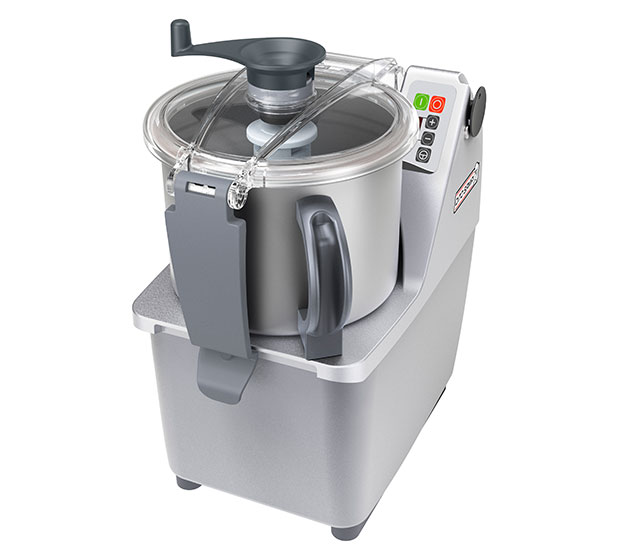
Dough blades
mix and knead dough evenly and efficiently, producing smooth, elastic textures without overworking the ingredients.
These attachments are designed to endure intensive, repeated use during peak hours. Their ergonomic construction and ease of handling ensure smooth operation and minimal downtime during shift changes or busy periods.
Choosing a processor with a comprehensive, high-performance accessory range is key to maximizing kitchen output and consistency. Every element – from blades to discs – is engineered with professional standards in mind, supporting demanding workflows without compromising results.
LAST NEWS

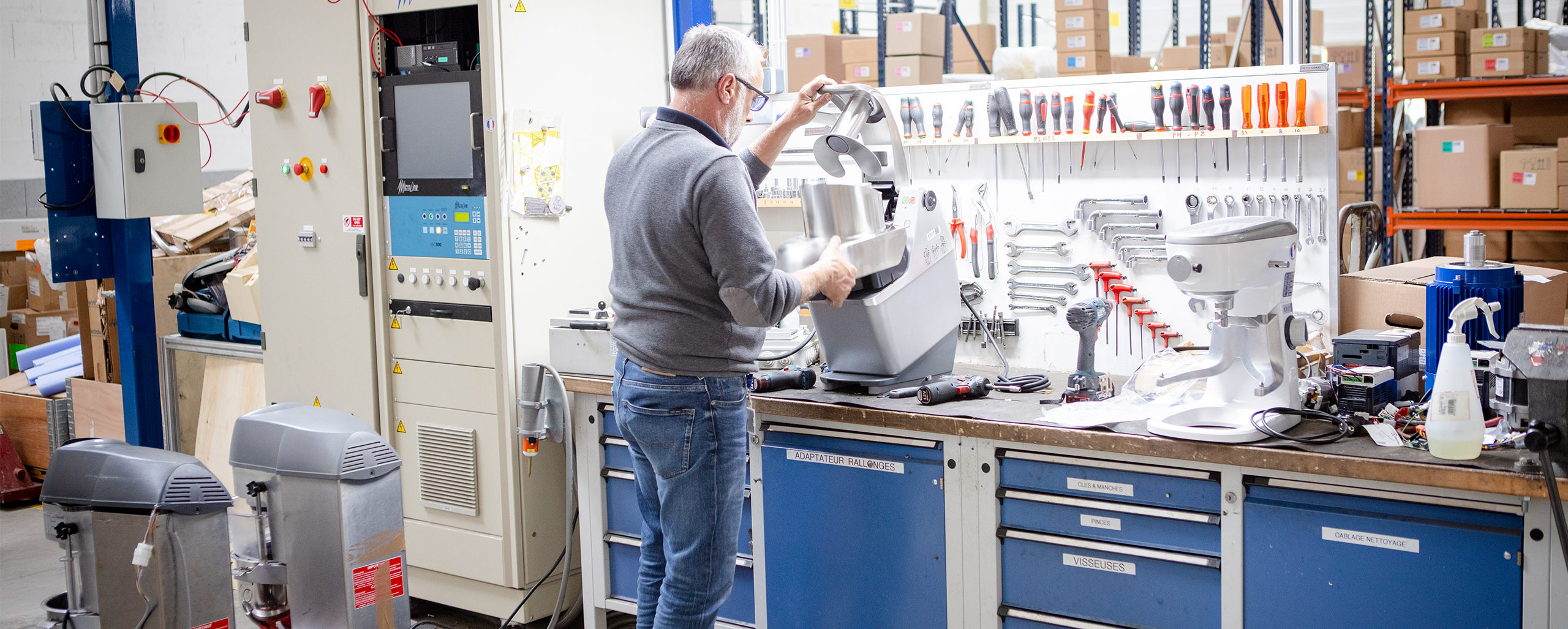

The Future of Kitchen Appliances: Latest Innovations in Commercial Kitchens
From the rise of automation to smarter, more connected devices, innovation in kitchen technology is moving at an unprecedented pace. For professional chefs and business owners, staying ahead of these trends isn’t just a matter of curiosity – it’s a competitive advantage. Modern commercial kitchen appliances are designed to do more than cook; they optimize workflows, enhance food safety, and adapt to evolving culinary demands.
In this article, we explore the most exciting new technology in kitchen appliances, how it’s reshaping efficiency and safety, and what trends are poised to define the future of commercial kitchens.
The Most Exciting Innovations in Commercial Kitchen Equipment
Recent years have seen a surge in innovation across all areas of professional kitchen equipment. Among the most noteworthy developments:
These advances aren’t just about novelty – they’re making kitchens faster, safer, and more consistent than ever before.
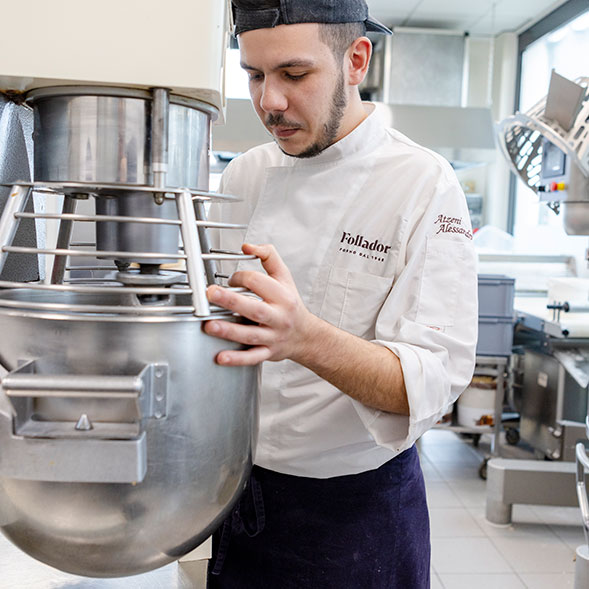
How Smart Appliances Are Improving Efficiency and Safety
Smart kitchen appliances are transforming how chefs interact with their tools. A food processor that adjusts its speed based on load, or a mixer that notifies staff when maintenance is due, can make a noticeable impact on daily operations.
Efficiency gains come from automation and adaptability. Smart equipment can store multiple user profiles, pre-programmed functions, and cycle preferences, reducing human error and improving consistency. Staff can spend less time adjusting settings and more time focusing on creativity and quality.
Safety, too, benefits from innovation. Sensors can shut off appliances in the event of overheating, while guided touchscreens reduce the chance of misuse. Digital logs track performance, allowing managers to identify irregularities early and avoid potential issues.
Appliances like those from Dito Sama are built with these priorities in mind – blending performance, durability, and technology to empower professional kitchens to work smarter, not harder. Dito Sama integrates advanced features such as variable speed control, ergonomic digital interfaces, and intelligent component tracking into many of its machines. These innovations don’t just enhance usability – they actively improve food consistency and reduce downtime in the busiest kitchen environments.
What’s Next? Future Trends in Kitchen Technology
As innovation continues, several trends are beginning to shape the kitchens of tomorrow:
- AI and machine learning integration: systems that learn usage patterns and adapt to workflows will personalize how equipment operates based on time of day, menu type, or user preference.
- Advanced robotics: while still in early adoption, robotic arms and automated prep systems are being tested in high-volume kitchens to improve consistency and output.
- Waste-reducing technologies: new equipment is being designed to measure waste, suggest portion adjustments, or integrate composting features directly into the prep process.
These developments aim to reduce stress, cut costs, and allow culinary teams to focus more on creativity and guest experience.
Staying informed about kitchen technology isn’t about chasing every new gadget – it’s about recognizing the tools that genuinely support your business goals. Dito Sama remains at the forefront of innovation, designing professional kitchen equipment that adapts to the future while supporting chefs in the present.
LAST NEWS



Essential Kitchen Equipment Every Professional Chef Should Have

Every professional kitchen has its own rhythm – but behind every smooth operation, there’s a thoughtful setup of essential tools doing the heavy lifting. Whether you're launching a new restaurant or refining your current workflow, investing in the right commercial kitchen appliances and tools is key to delivering quality, speed, and safety in daily service.
In this article, we’ll explore the must-have kitchen equipment every professional should consider, how to choose the best fit for your business, and how to keep your setup in peak condition for years to come.
The Essential Tools Every Commercial Kitchen Needs
A well-equipped kitchen is more than a luxury – it’s the foundation of consistent food quality and an efficient workflow. While needs vary by cuisine and concept, some tools are universally indispensable:
Each of these tools plays a role in maintaining food quality, reducing waste, and supporting a productive team.
How to Choose the Best Equipment for Your Business
Selecting the right equipment isn’t just about ticking boxes – it’s about aligning tools with your kitchen’s specific goals and challenges. Before purchasing new appliances, consider the following.
01.
Volume and menu needs:
evaluate how many dishes you serve per day and which tools are most relevant to your core offerings. For example, if your kitchen handles a large number of vegetable-heavy dishes, a high-capacity vegetable cutter might be a better investment than an extra fryer.
02.
Space and layout:
take precise measurements and think about how equipment will fit into the kitchen flow. Efficient layout minimizes cross-traffic and boosts safety. Did you know that even a few seconds saved per dish, multiplied across hundreds of orders, can lead to hours of labor saved every week?
03.
Staff skill level:
choose user-friendly, intuitive machines if you frequently train new staff. Some equipment, like Dito Sama’s food processors, are engineered for ease-of-use without compromising performance, helping reduce training time.
04.
Energy efficiency and maintenance:
opt for appliances that offer long-term value through lower energy use, durable components, and easy maintenance routines. Energy-efficient models not only reduce your utility bills – they also contribute to sustainability goals that matter more and more to today’s diners.
05.
Supplier support and warranty:
choose partners who offer installation, training, and responsive customer service. Dito Sama, for example, supports professionals with a robust range of equipment and expert guidance, helping you get up and running smoothly and stay that way.

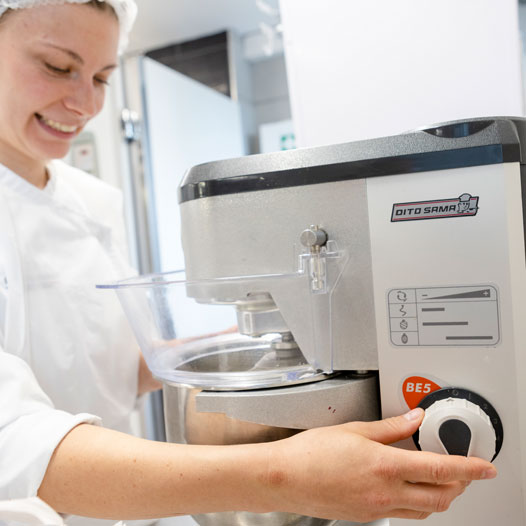

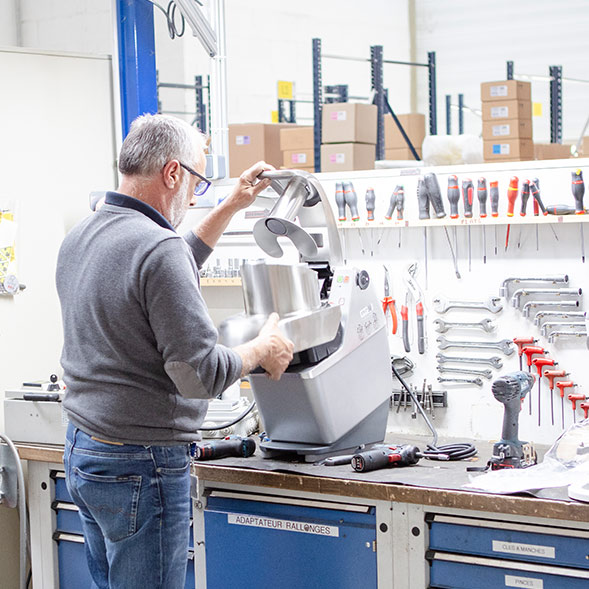


01.
Volume and menu needs:
evaluate how many dishes you serve per day and which tools are most relevant to your core offerings. For example, if your kitchen handles a large number of vegetable-heavy dishes, a high-capacity vegetable cutter might be a better investment than an extra fryer.

02.
Space and layout:
take precise measurements and think about how equipment will fit into the kitchen flow. Efficient layout minimizes cross-traffic and boosts safety. Did you know that even a few seconds saved per dish, multiplied across hundreds of orders, can lead to hours of labor saved every week?

03.
Staff skill level:
choose user-friendly, intuitive machines if you frequently train new staff. Some equipment, like Dito Sama’s food processors, are engineered for ease-of-use without compromising performance, helping reduce training time.

04.
Energy efficiency and maintenance:
opt for appliances that offer long-term value through lower energy use, durable components, and easy maintenance routines. Energy-efficient models not only reduce your utility bills – they also contribute to sustainability goals that matter more and more to today’s diners.

05.
Supplier support and warranty:
choose partners who offer installation, training, and responsive customer service. Dito Sama, for example, supports professionals with a robust range of equipment and expert guidance, helping you get up and running smoothly and stay that way.
When these factors are considered together, they help you build a reliable, scalable kitchen setup that adapts to your growing business. A smart choice today can prevent headaches tomorrow – and give your team the tools they need to thrive.
Maintaining and Upgrading Your Kitchen Setup
Buying commercial kitchen equipment is a significant investment – but how you care for it matters just as much as what you choose.
Establish a regular cleaning and maintenance routine, with daily, weekly, and monthly checklists. This not only extends the life of your equipment but also protects food safety and improves staff accountability.
As your business grows, keep a close eye on where your current setup may be falling short. Are prep times too long? Is your team waiting for equipment to become available? These are signals that it may be time to upgrade or expand your lineup.
Technology evolves, and so do kitchen needs. Investing in multifunctional equipment – like the professional food processors and vegetable cutters offered by Dito Sama – can add flexibility without sacrificing space. These tools are designed to grow with your operation, offering both precision and power in demanding environments.
In the end, a well-chosen and well-maintained kitchen setup pays off daily: in smoother service, happier staff, and dishes that consistently meet your standards.
LAST NEWS

